Todd R. Forsgren
Last week I introduced my project Full Fathom Five, a look at the health of the world’s marine and aquatic environments through several chapters that each consider a different type of photographic “specimens.'' The week I’ll be sharing a chapter that I call Ex. Ex. Colonies, which features coral specimens from the Smithsonian’s Invertebrate Zoology Department’s collections.
The U.S. Navy’s U.S. South Seas Exploring Expedition (called the Ex. Ex. for short) was an ambitious four-year trip around the world from 1838-1842. It included six ships and the crew had a team of nine scientists and artists. The thousands of articles collected (from ethnographic artifacts to biological specimens) became the foundation of the Smithsonian Institution’s collections.
Right around this time, in Great Britain, Anna Atkins was experimenting with a new photographic technology called cyanotype. Using ferric ammonium citrate and potassium ferricyanide, it makes blue images. Atkins made her images by laying algal specimens directly onto paper coated with these chemicals and then exposing them to sunlight. From these images, she created the first photographic book: Photographs of British Algae: Cyanotype Impressions (1843).
Among the specimens gathered during the Ex. Ex. were numerous stony corals, many of which were the first of their species described by science. But with the technology at the time, it would’ve been difficult to make meaningful cyanotypes of these corals, as the process requires the object to be relatively flat (and being somewhat translucent is also helpful). Neither of which applies to most stony corals. With today’s technology, this is no longer the case. I photographed particularly charismatic specimens in the Smithsonian Invertebrate Zoology coral collection (from the Ex. Ex. as well as later expeditions) and used these images to make this series of cyanotypes.
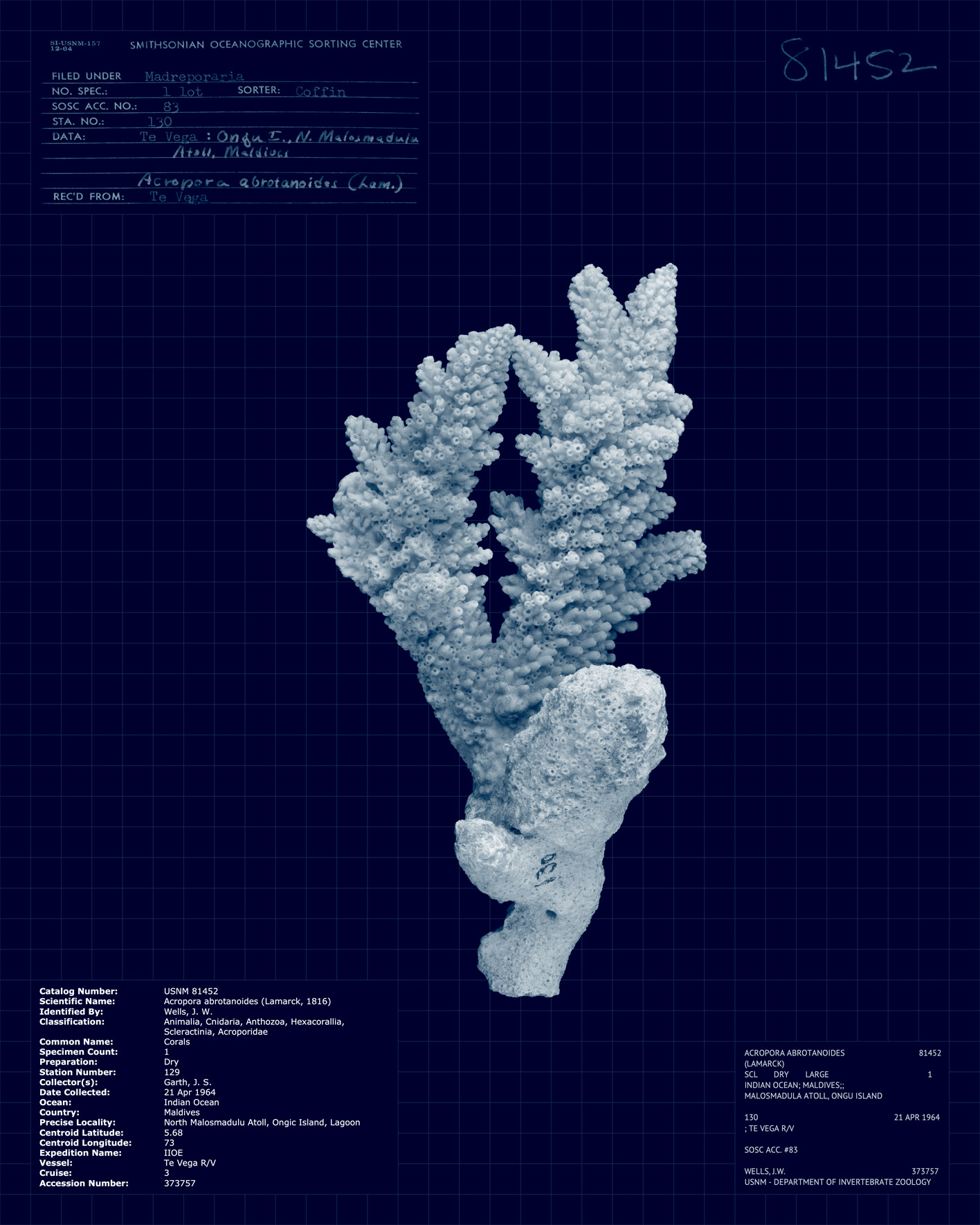
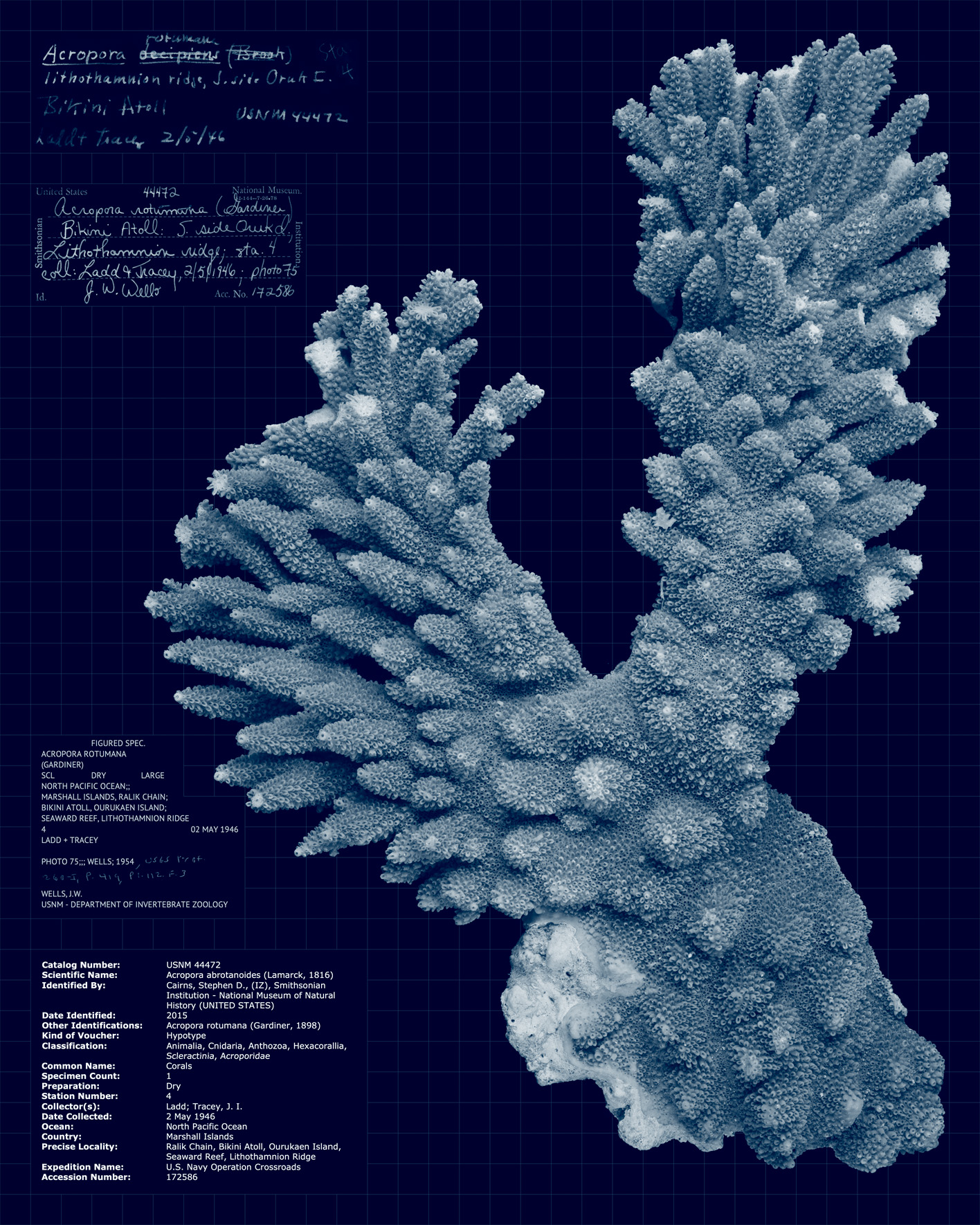
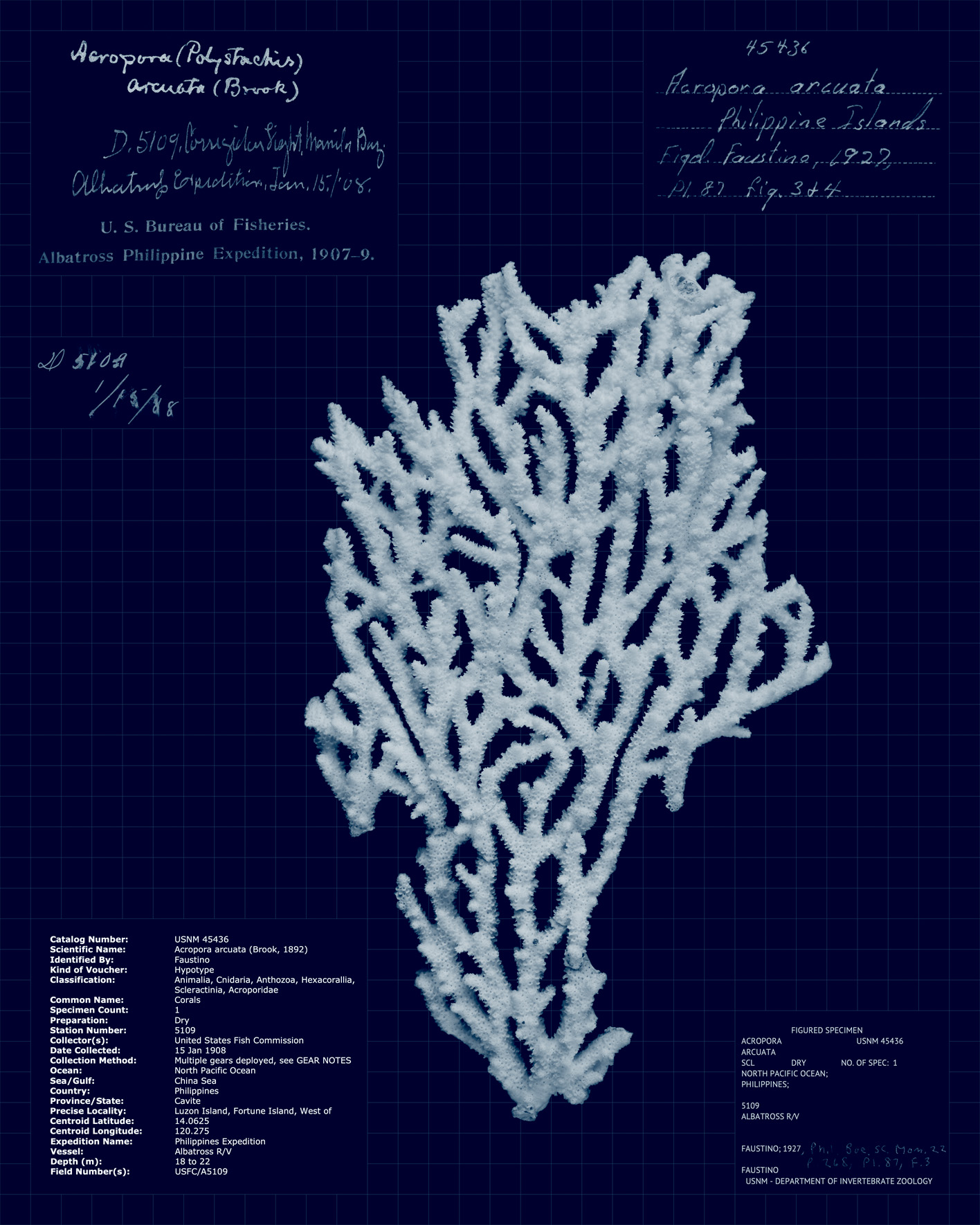
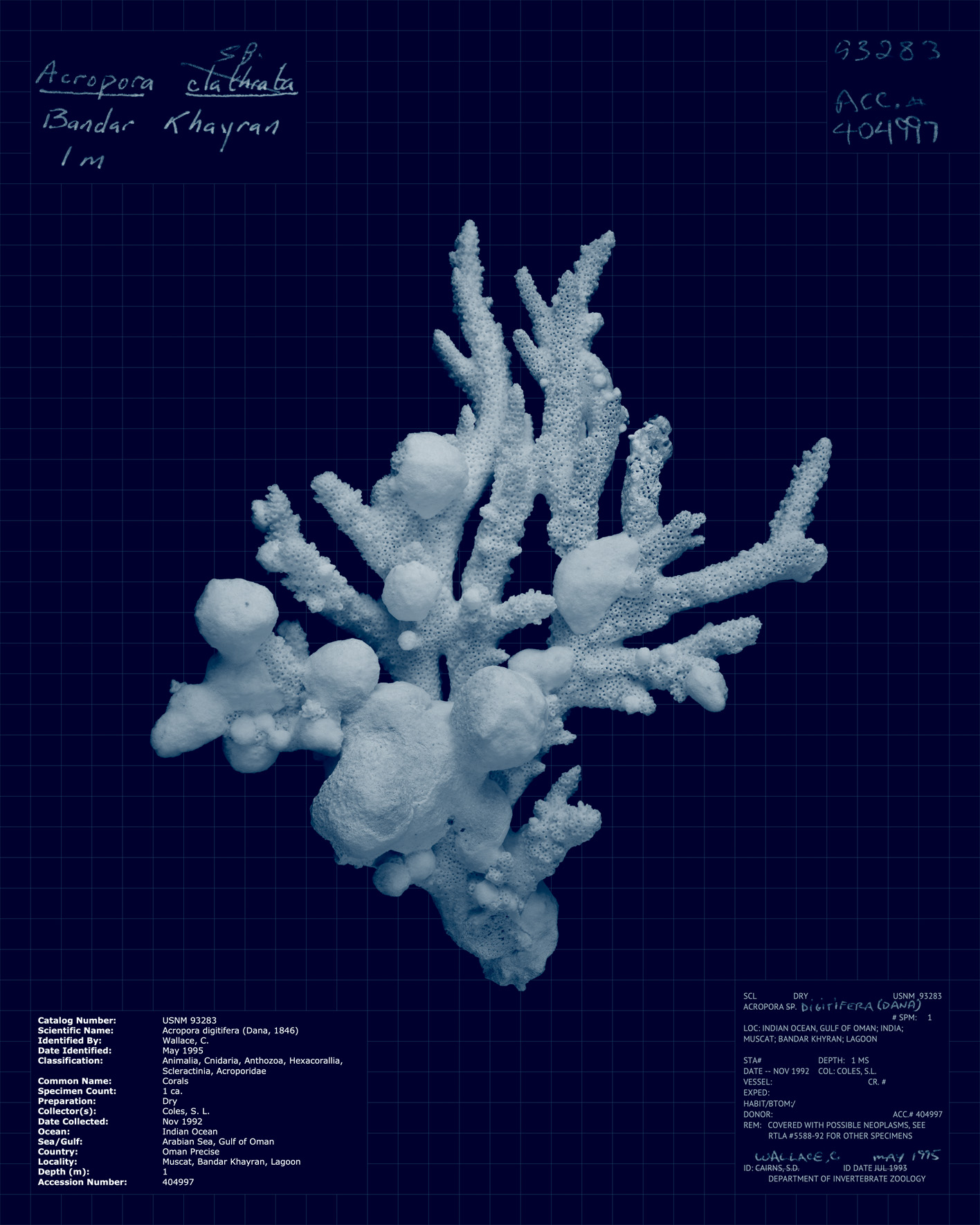
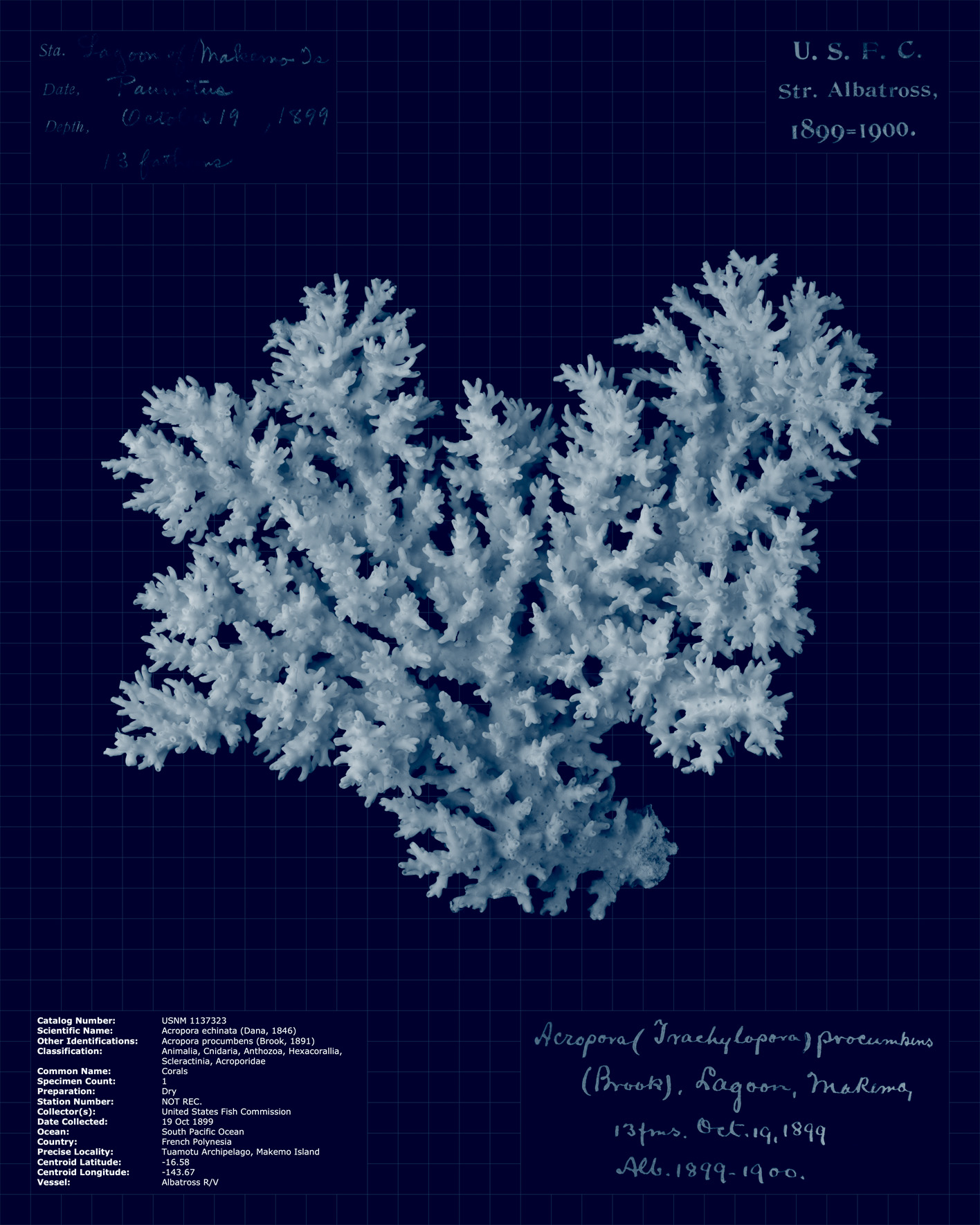
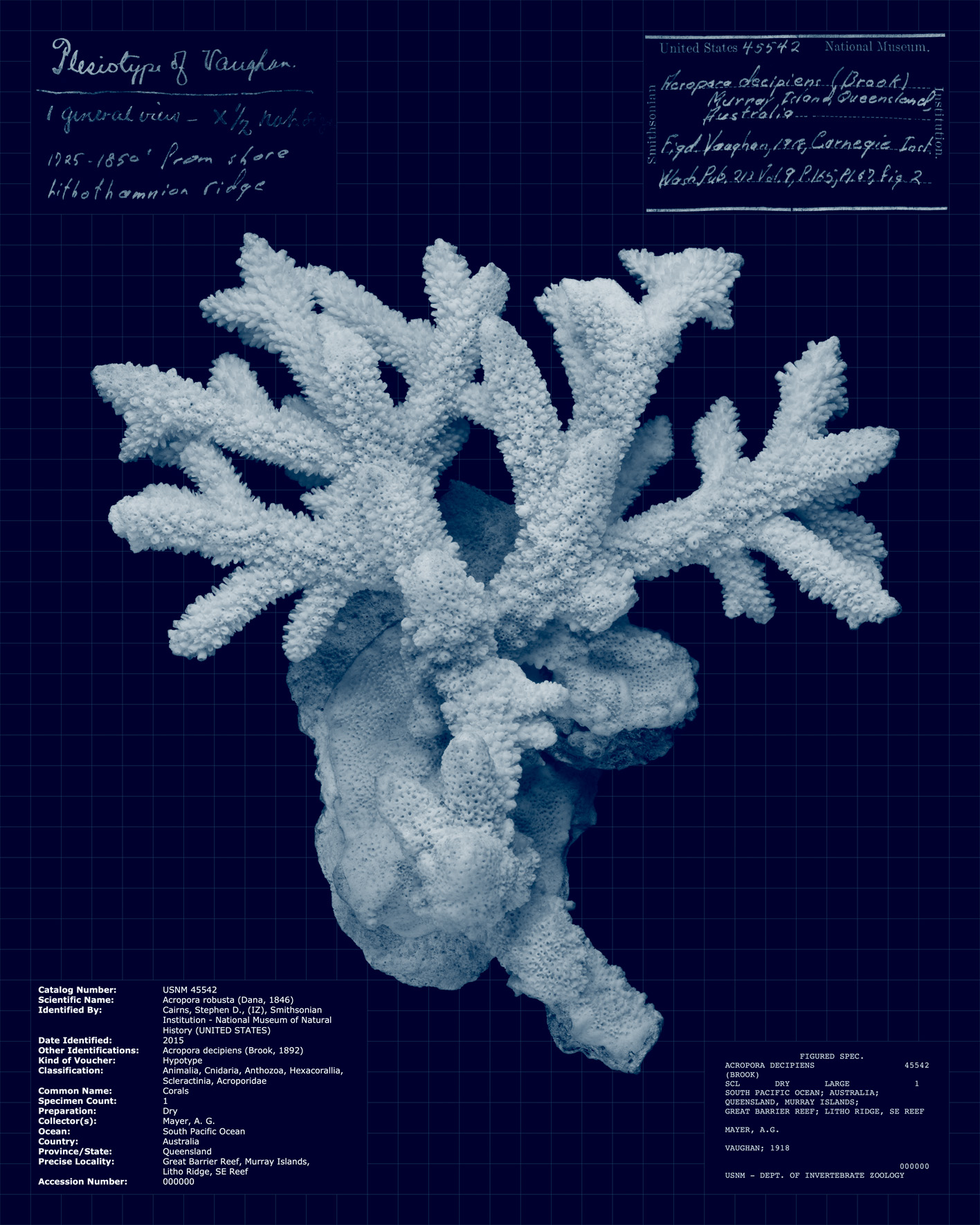
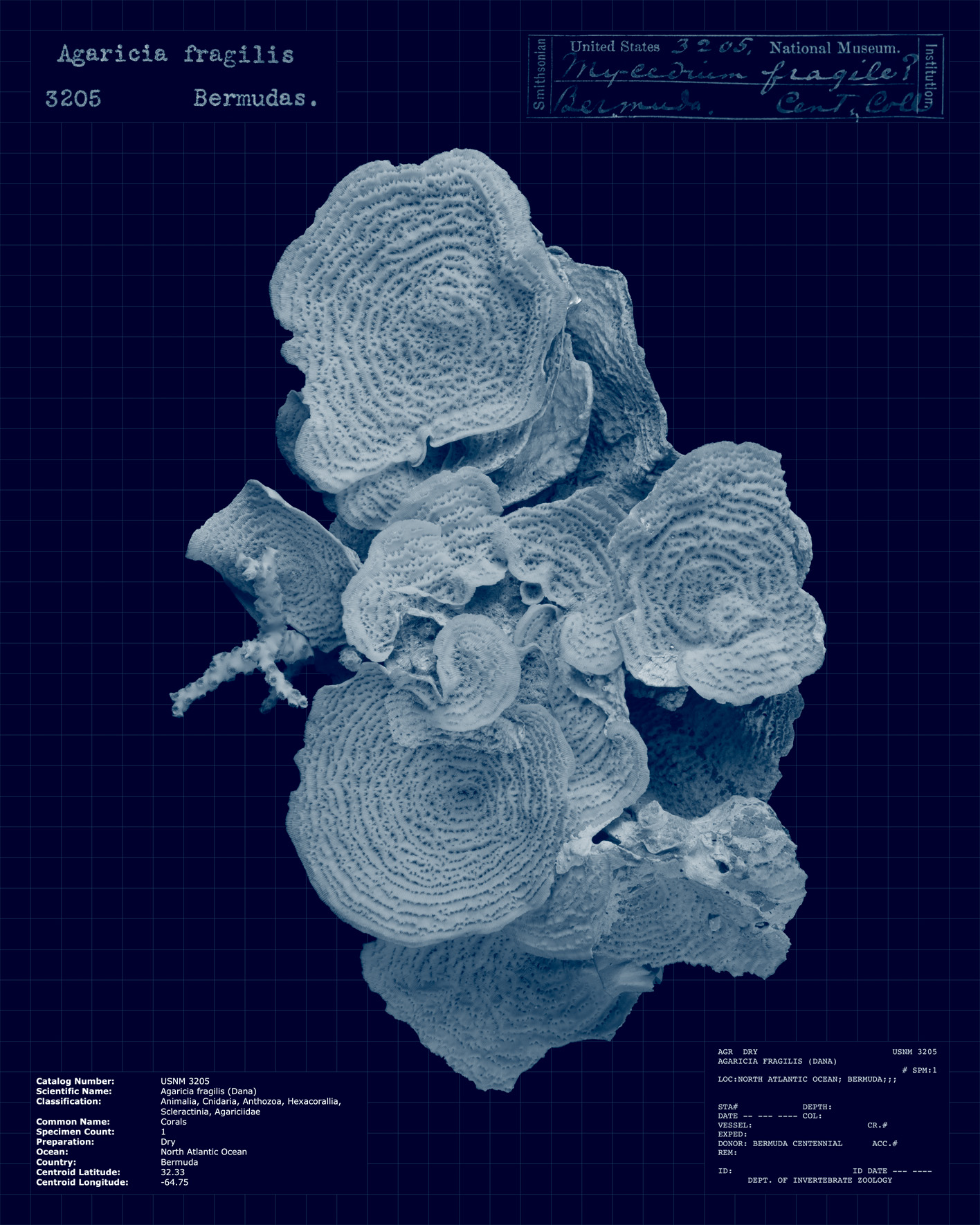
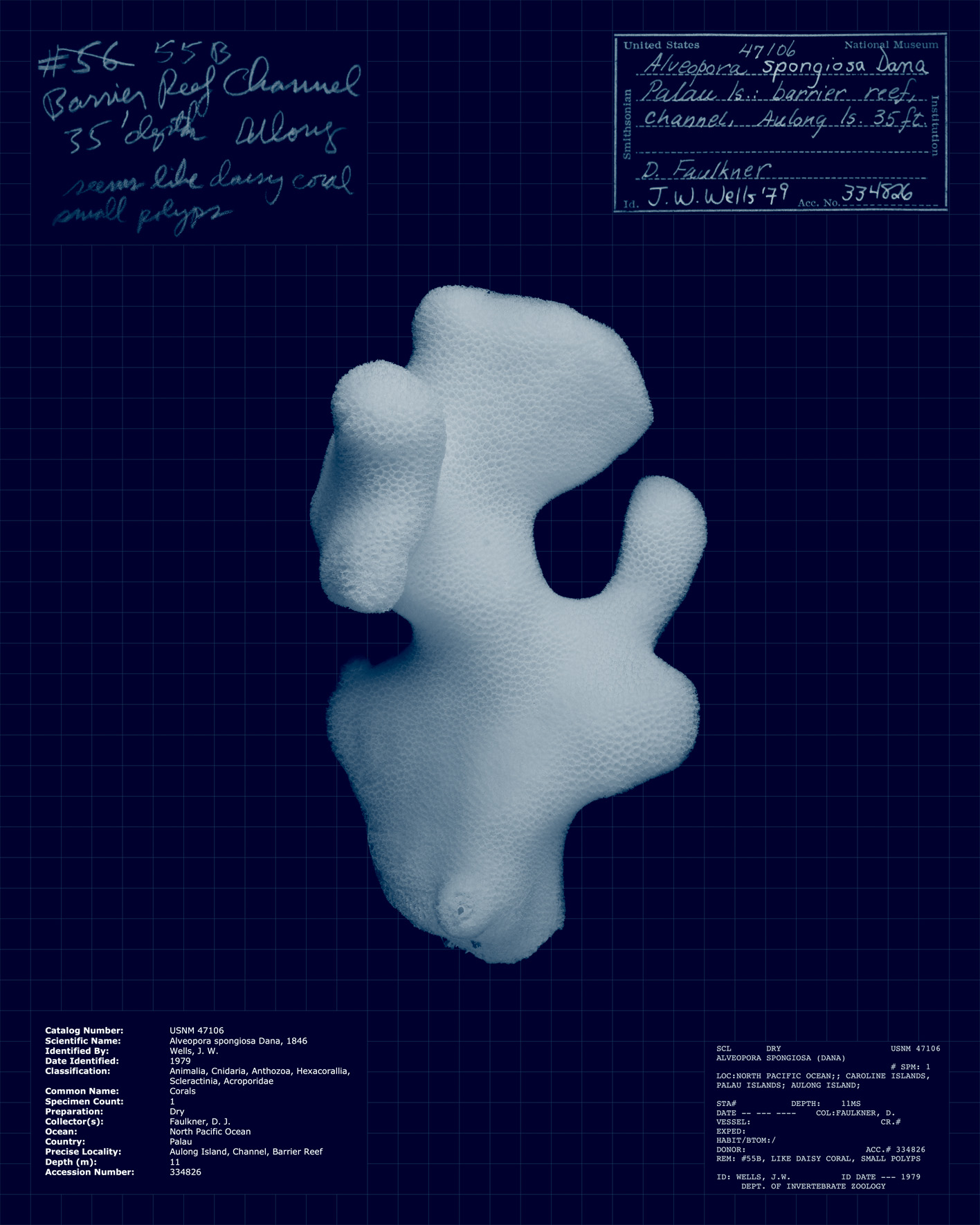
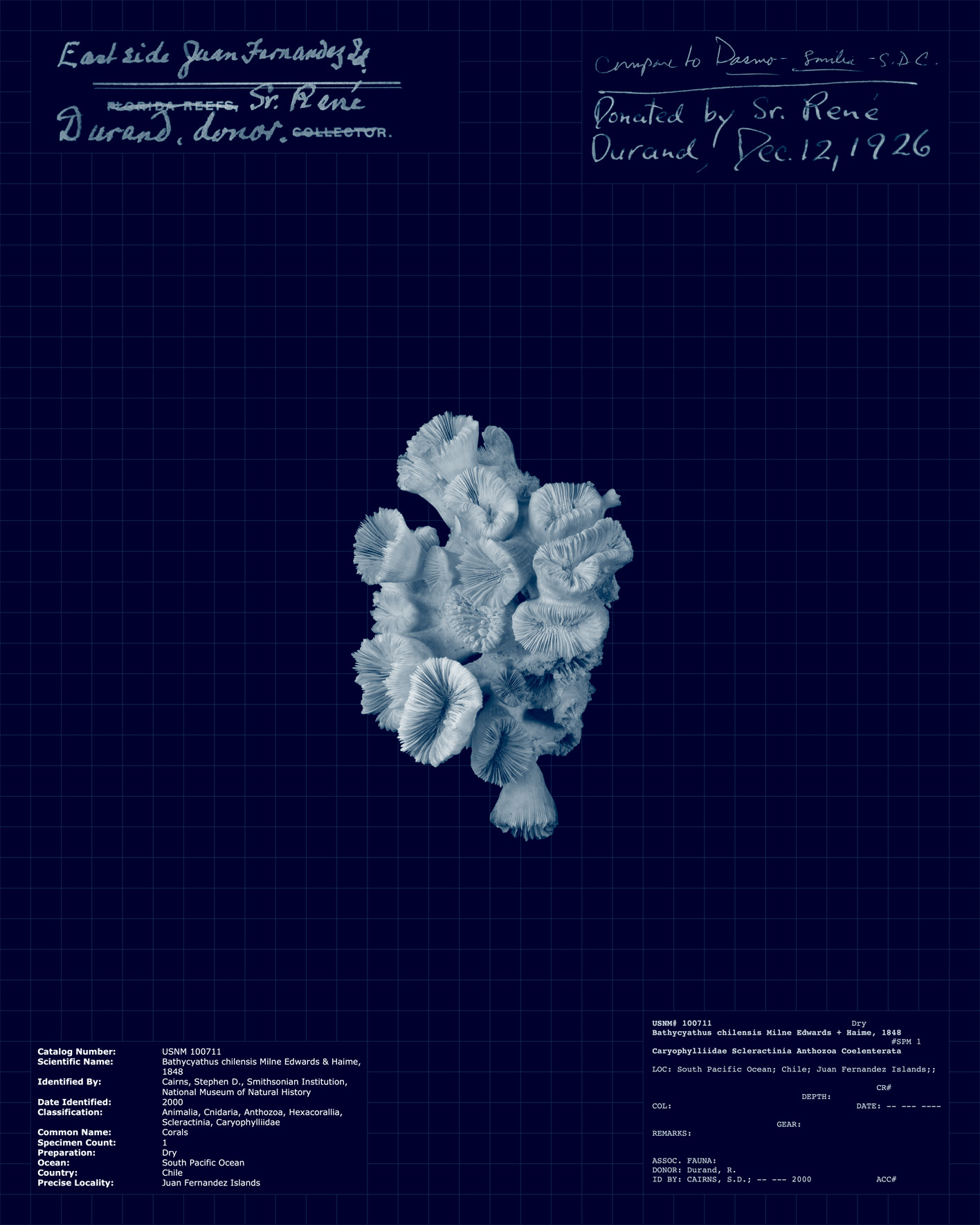
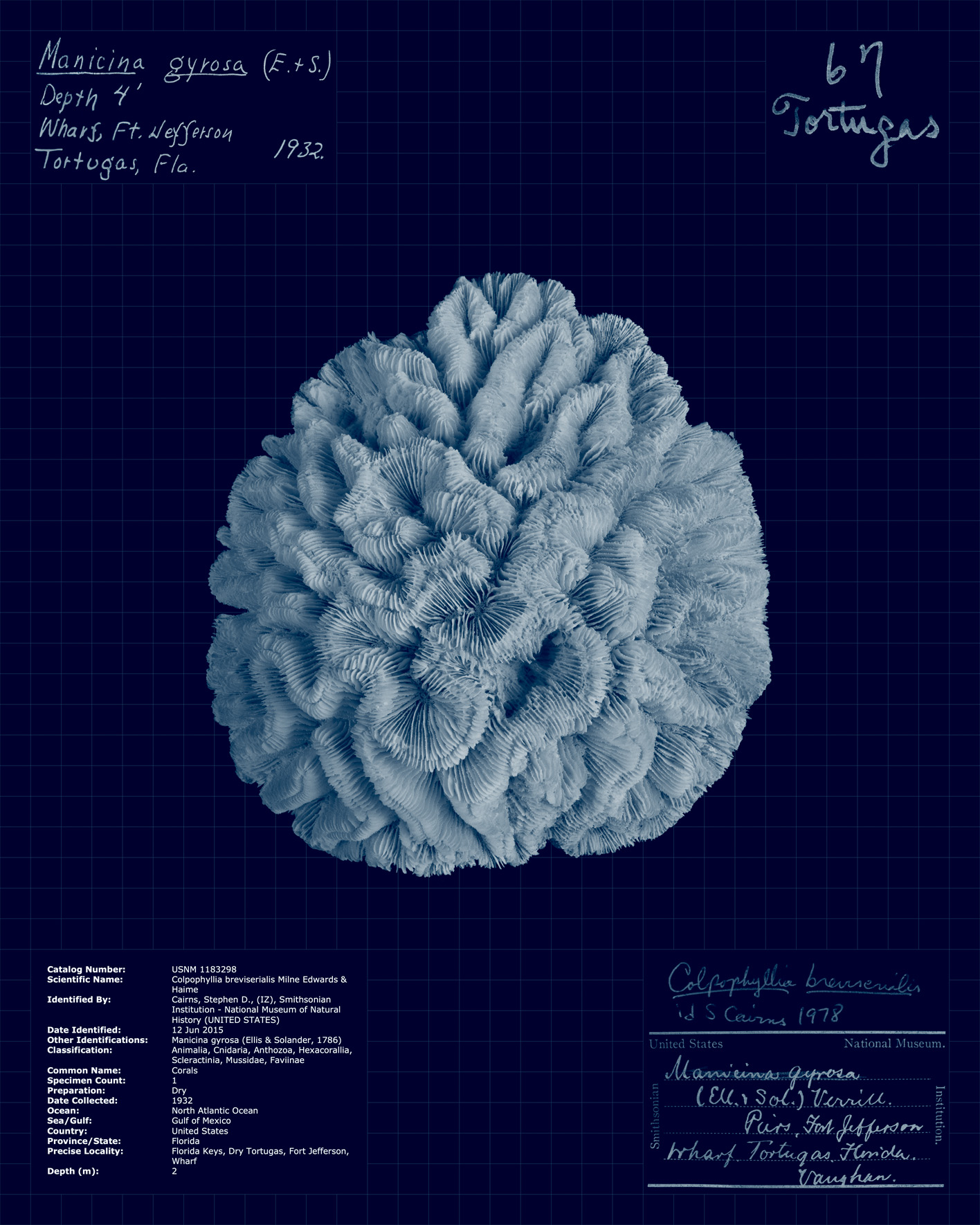
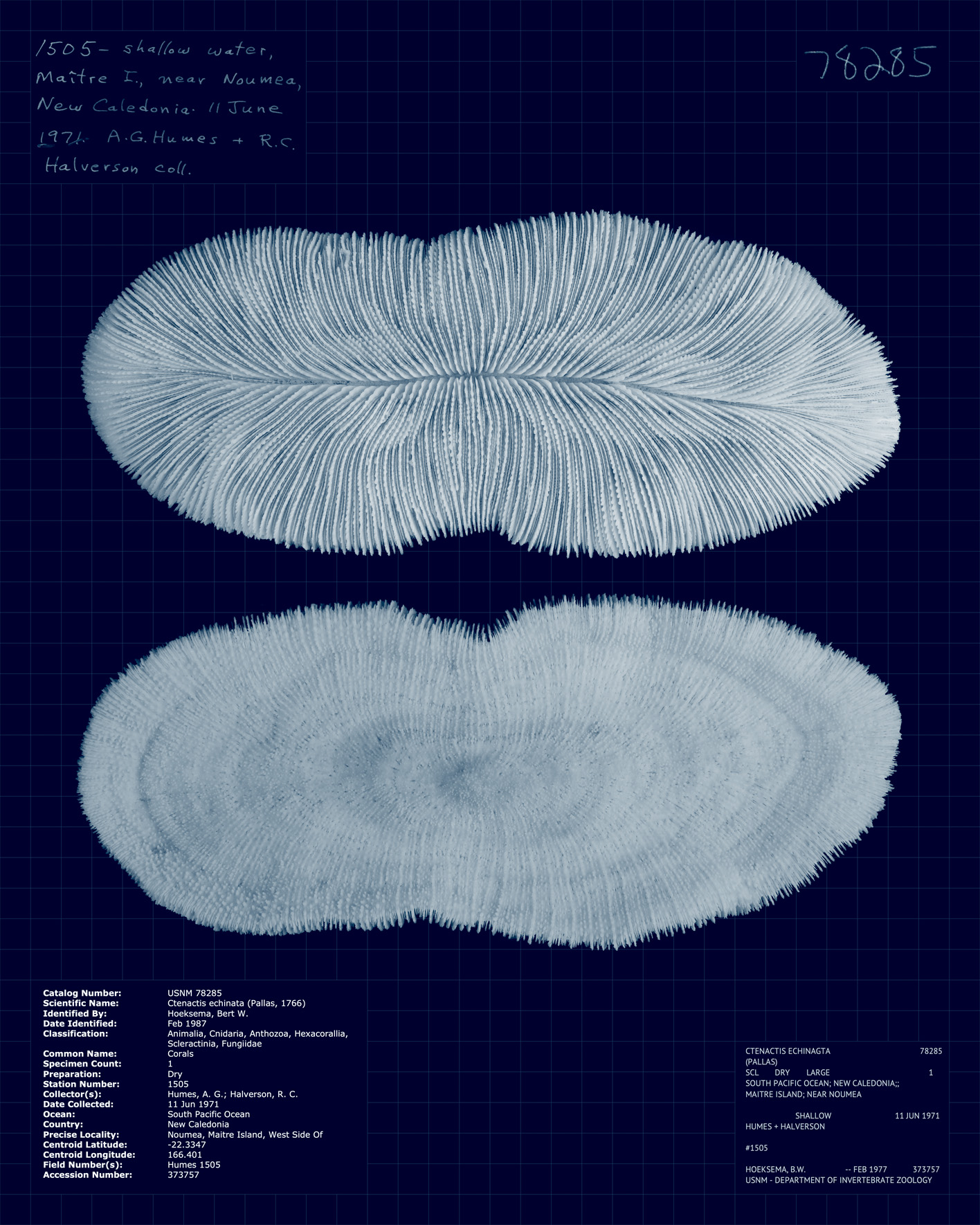
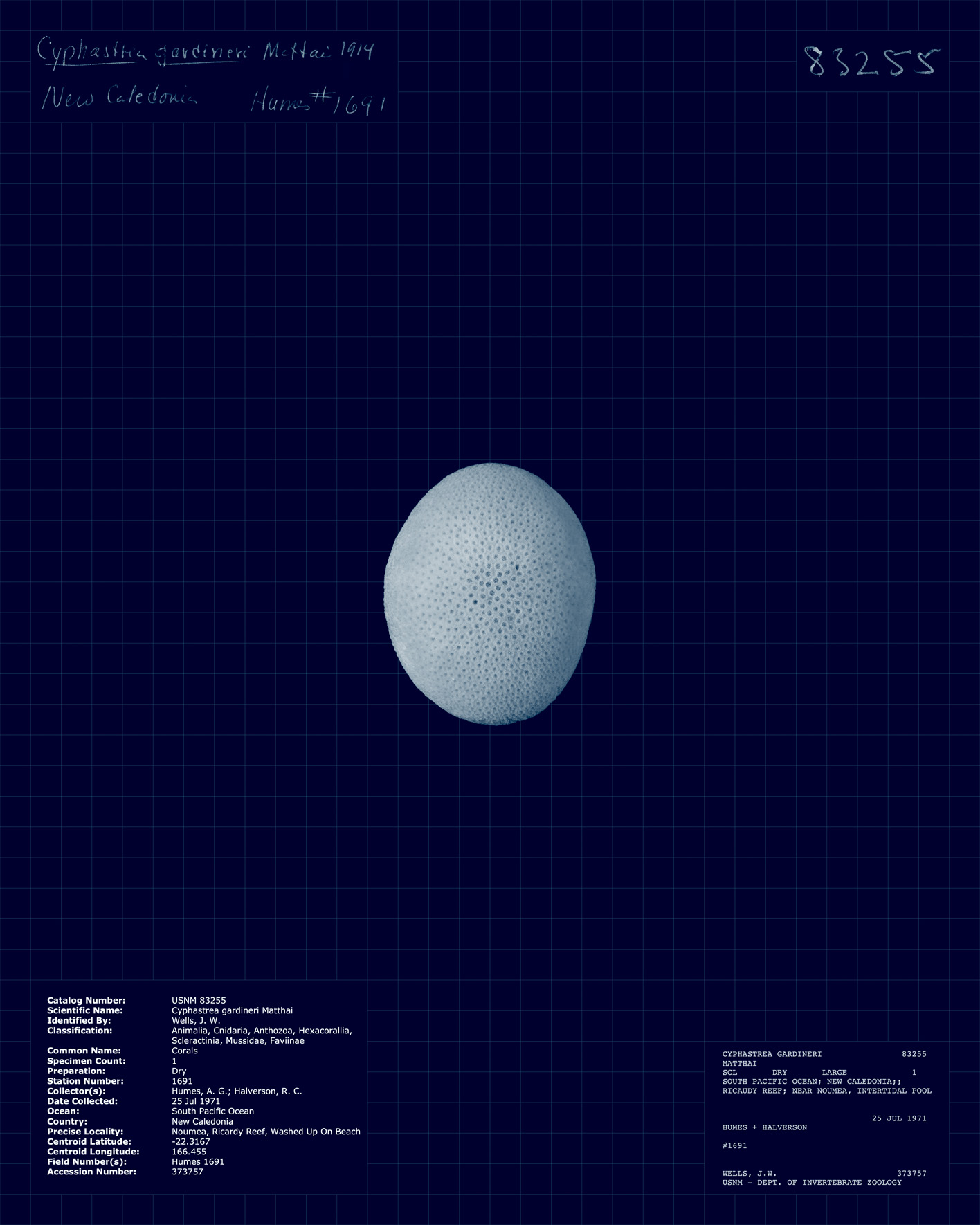
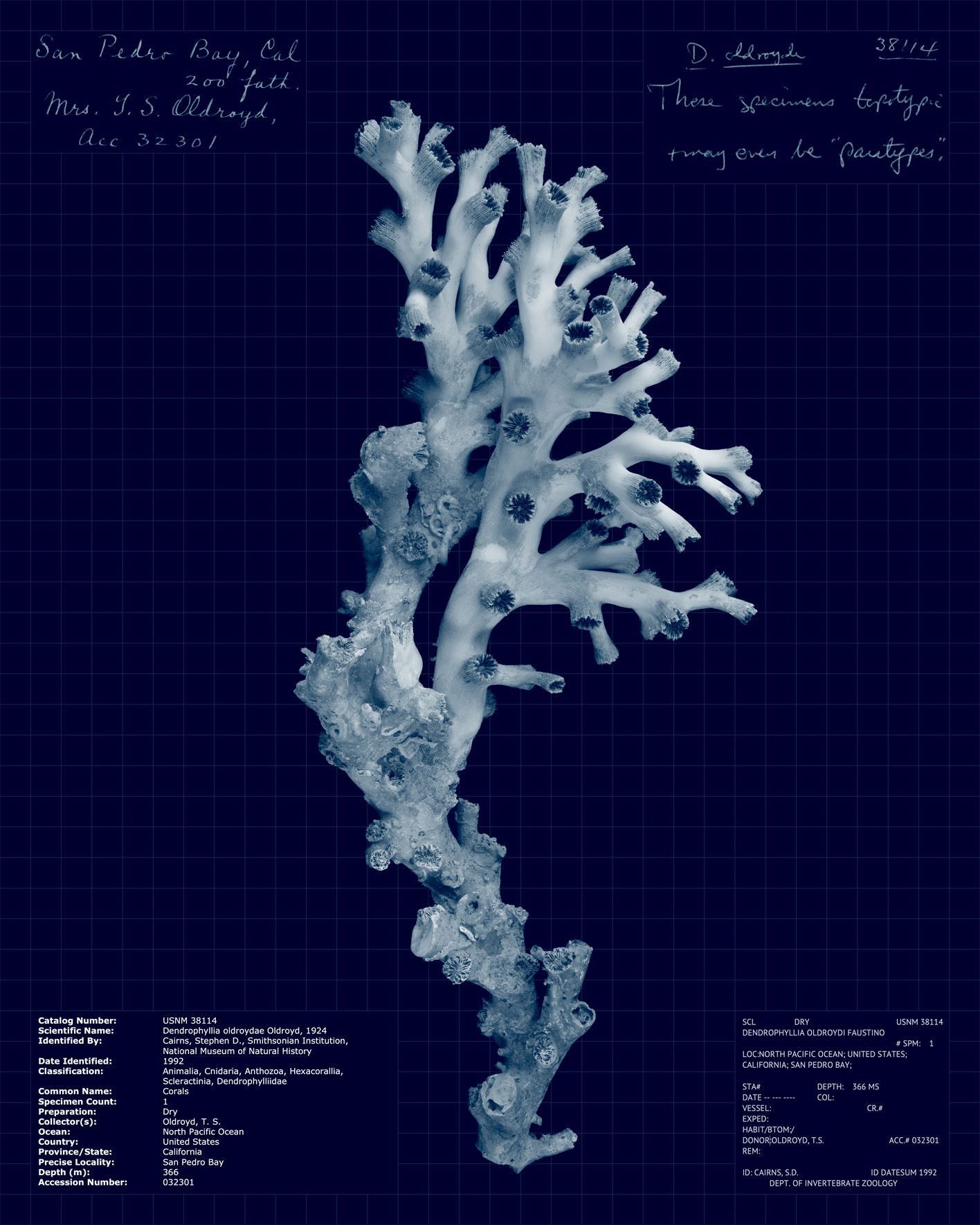
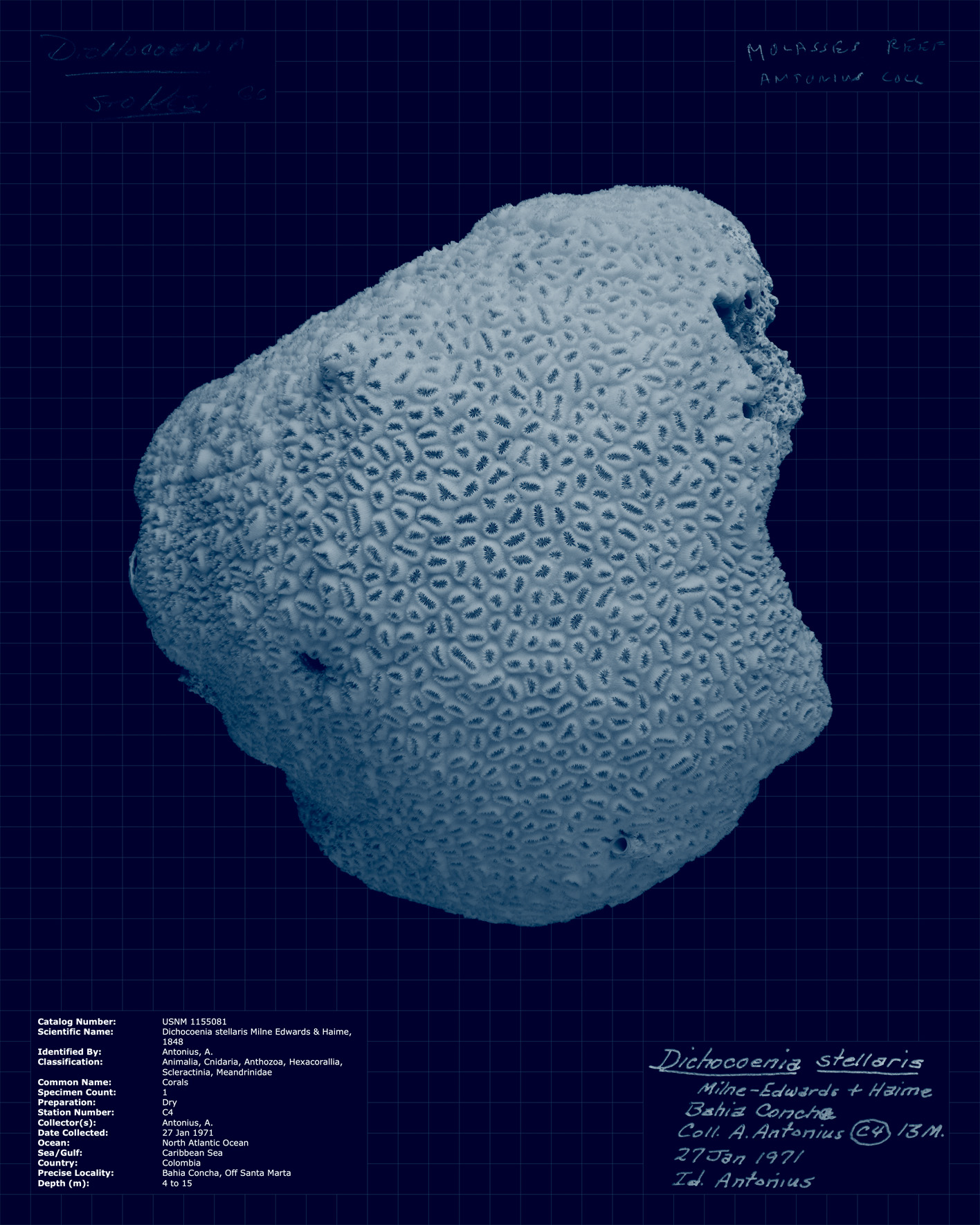
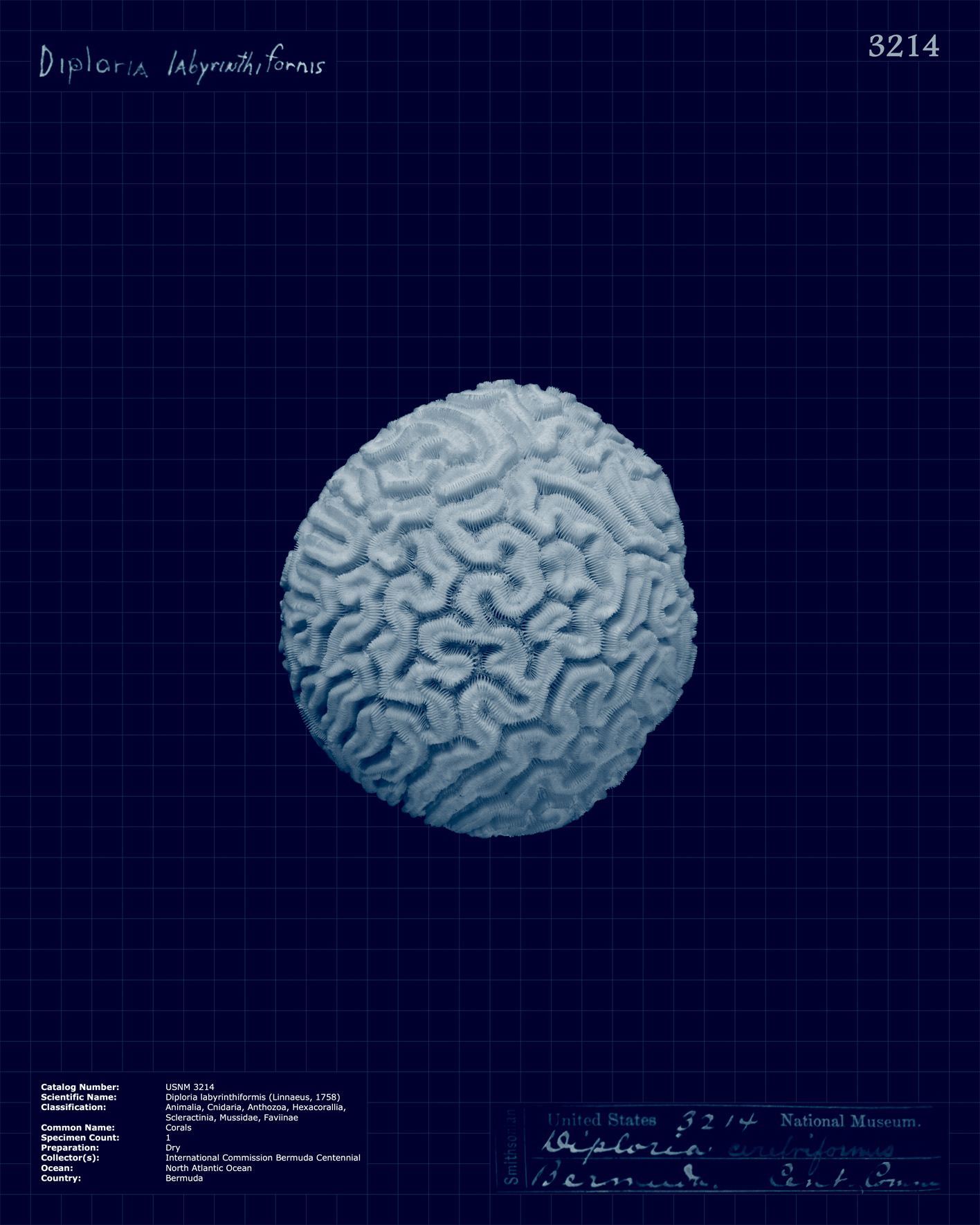
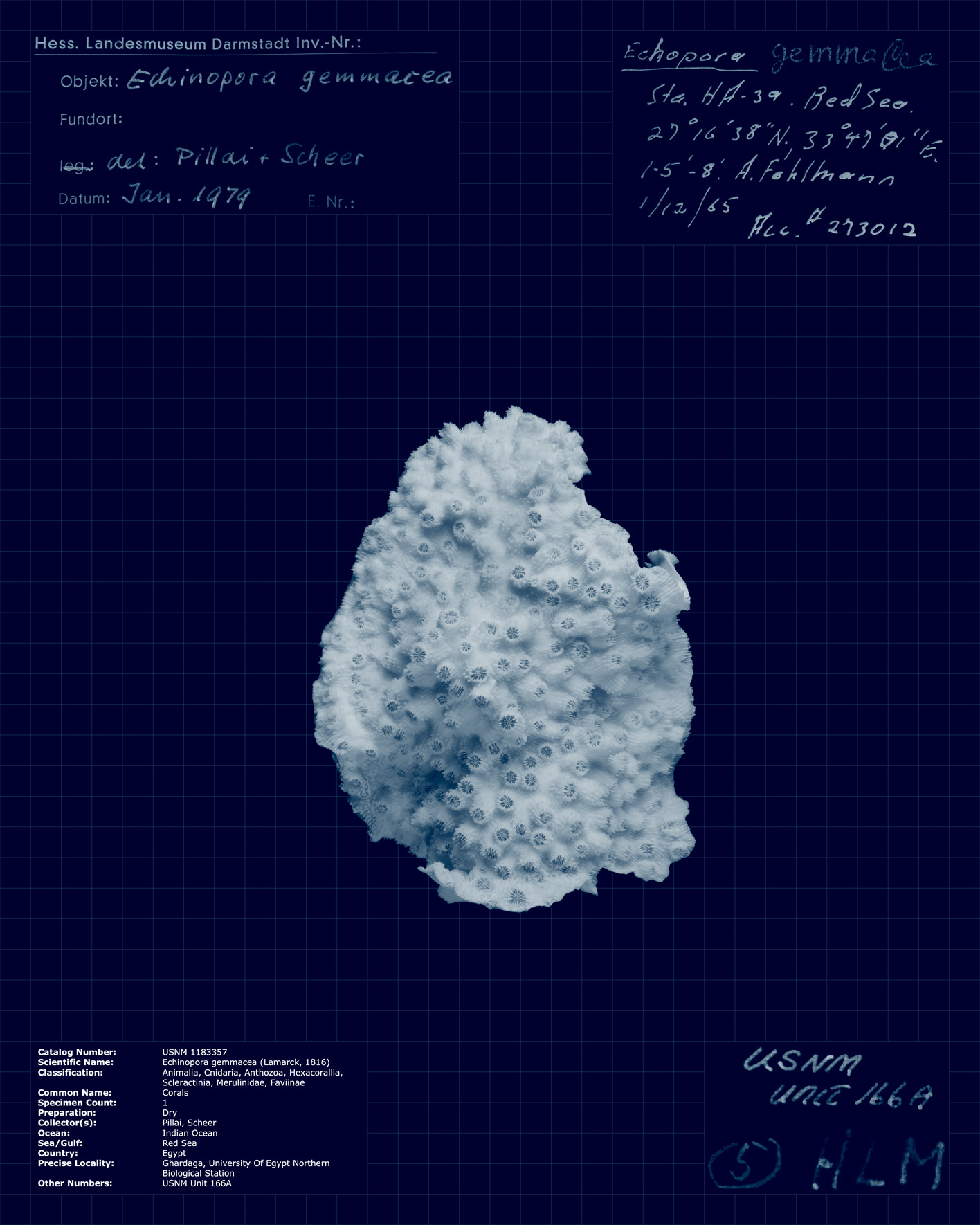
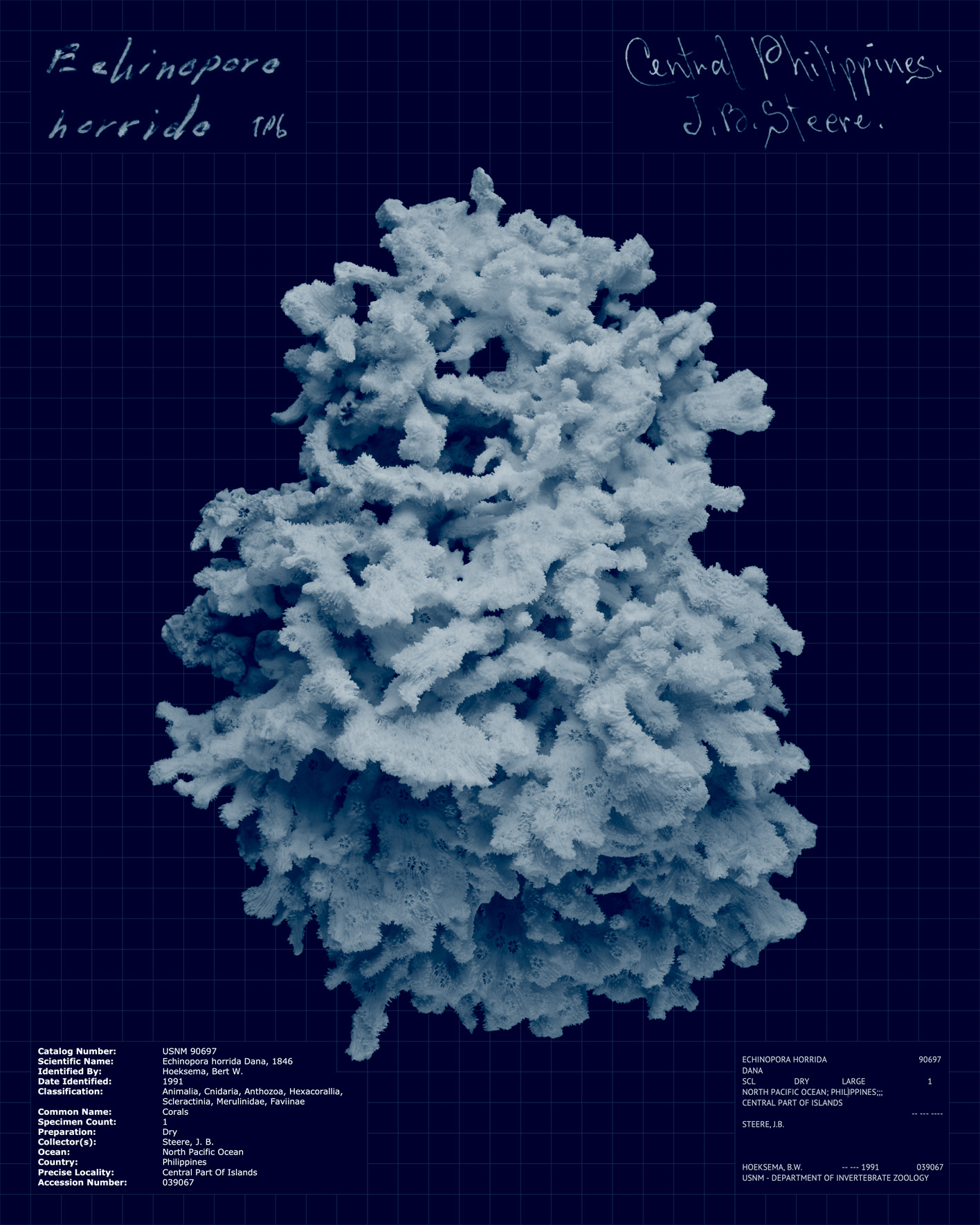
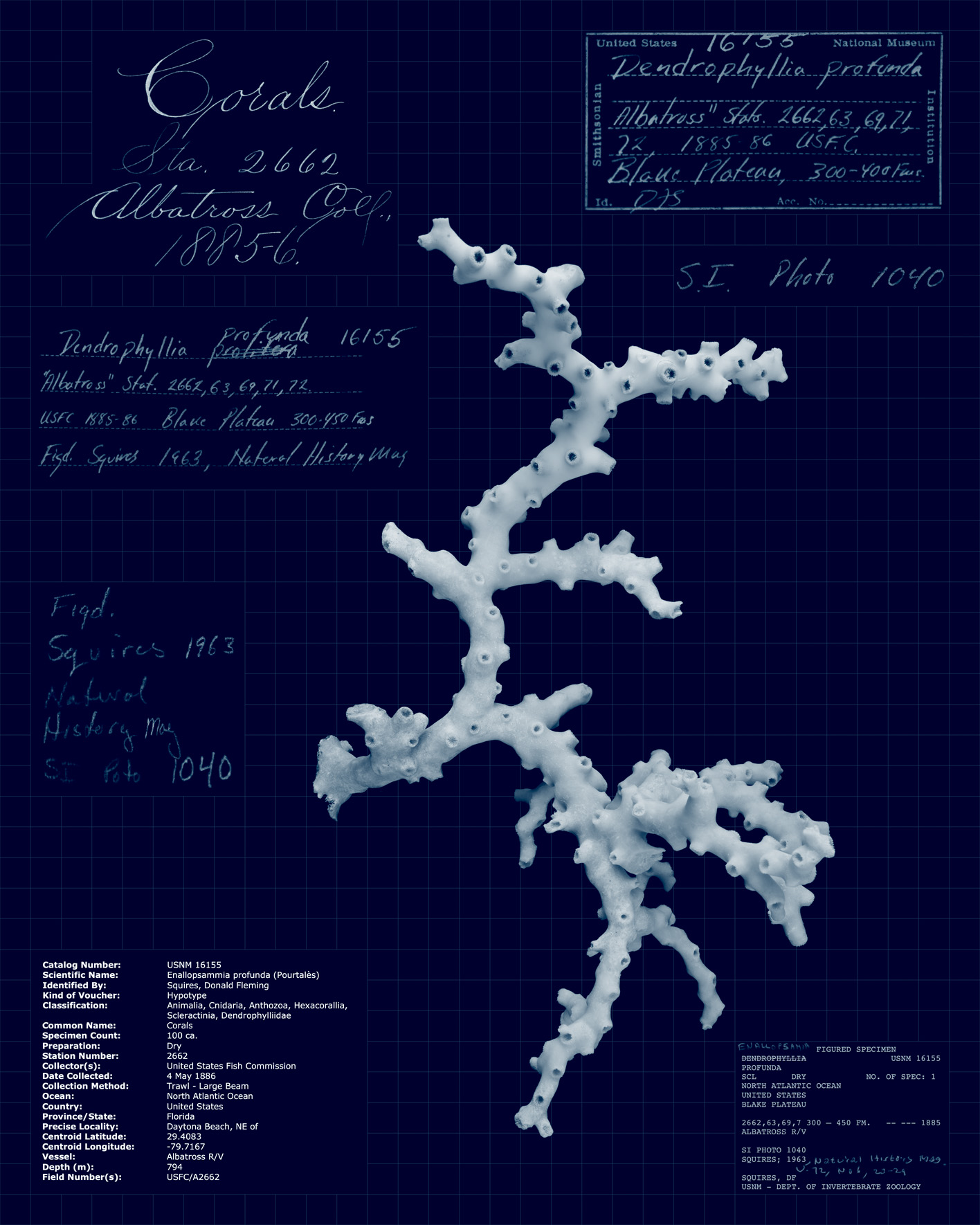
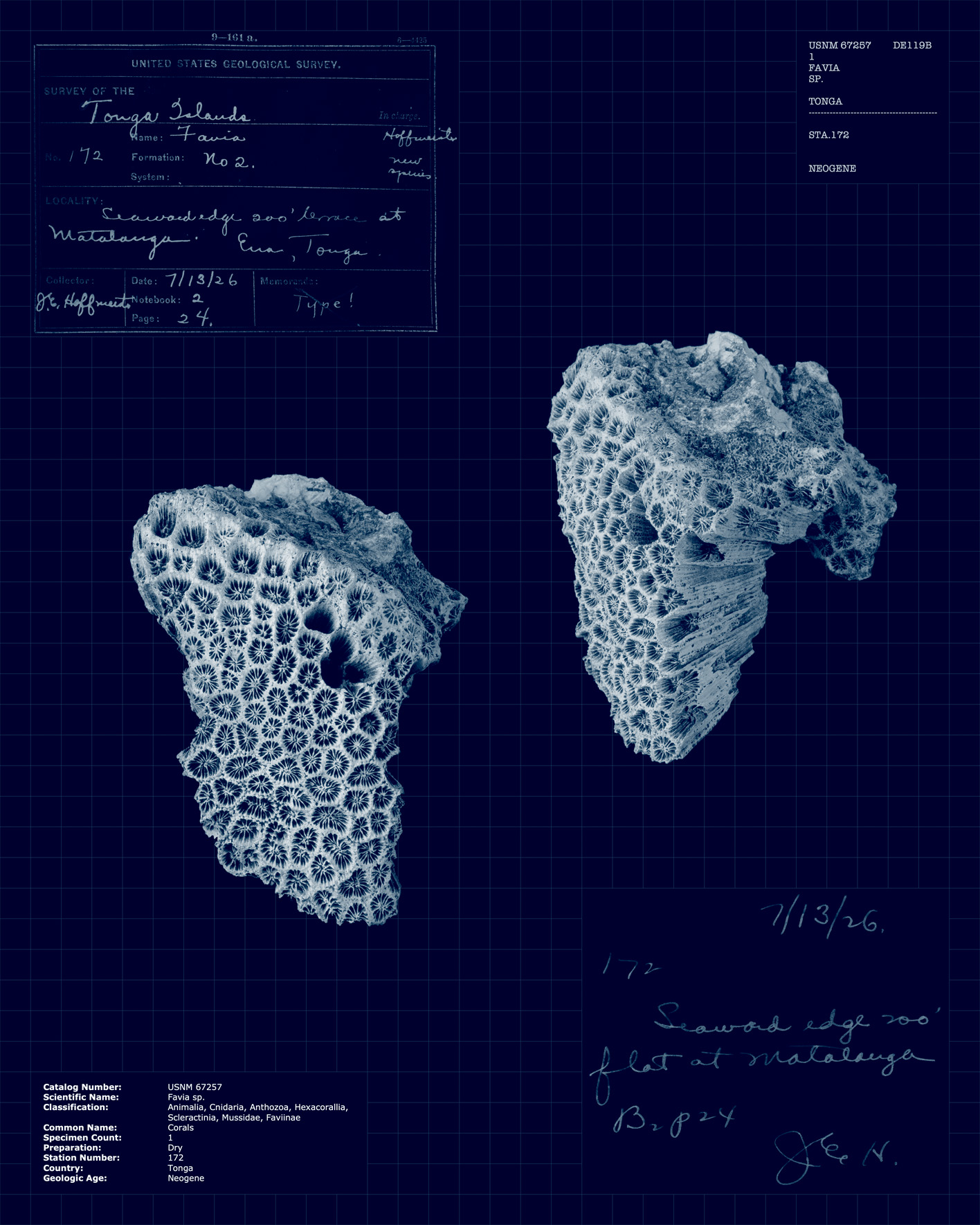
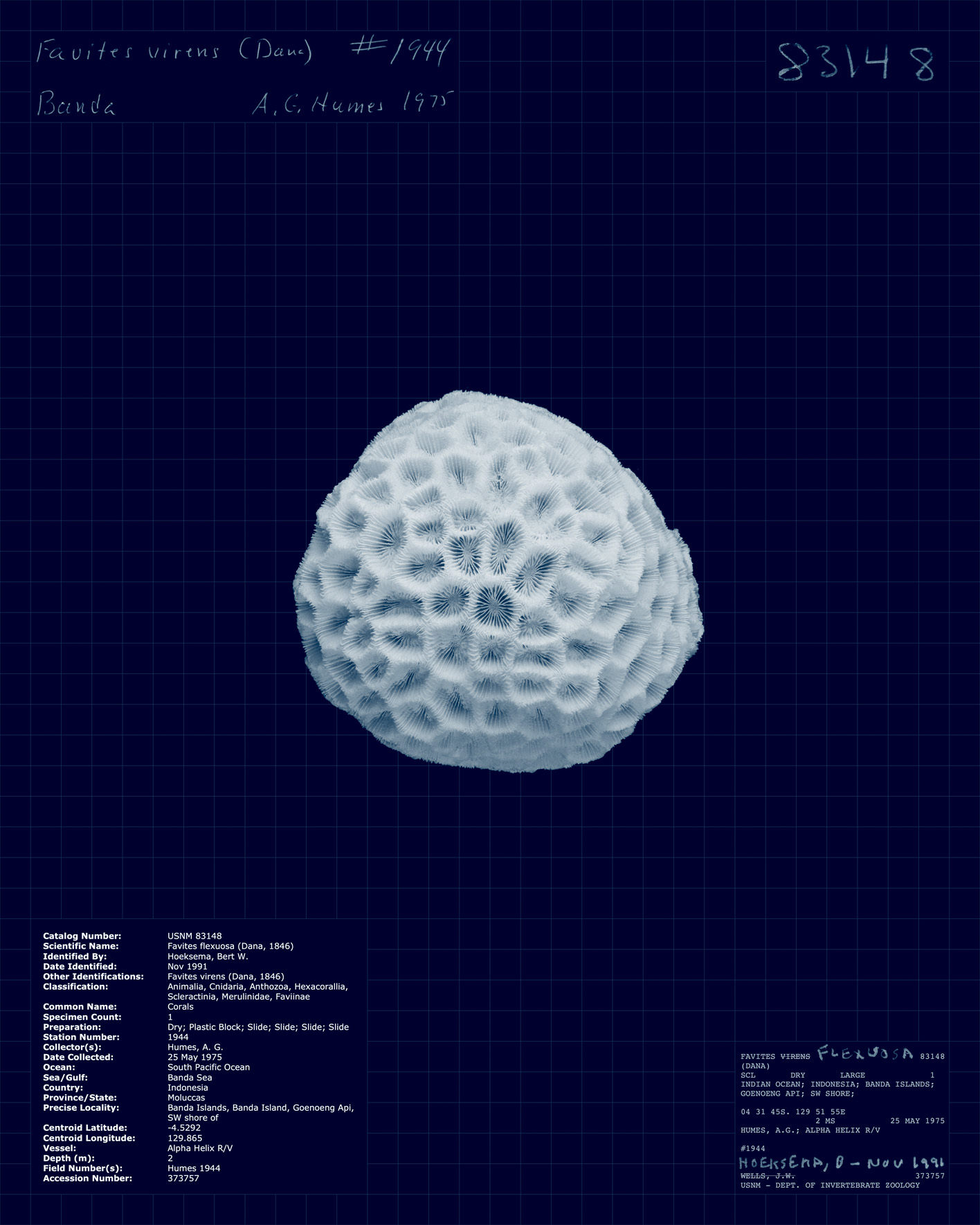
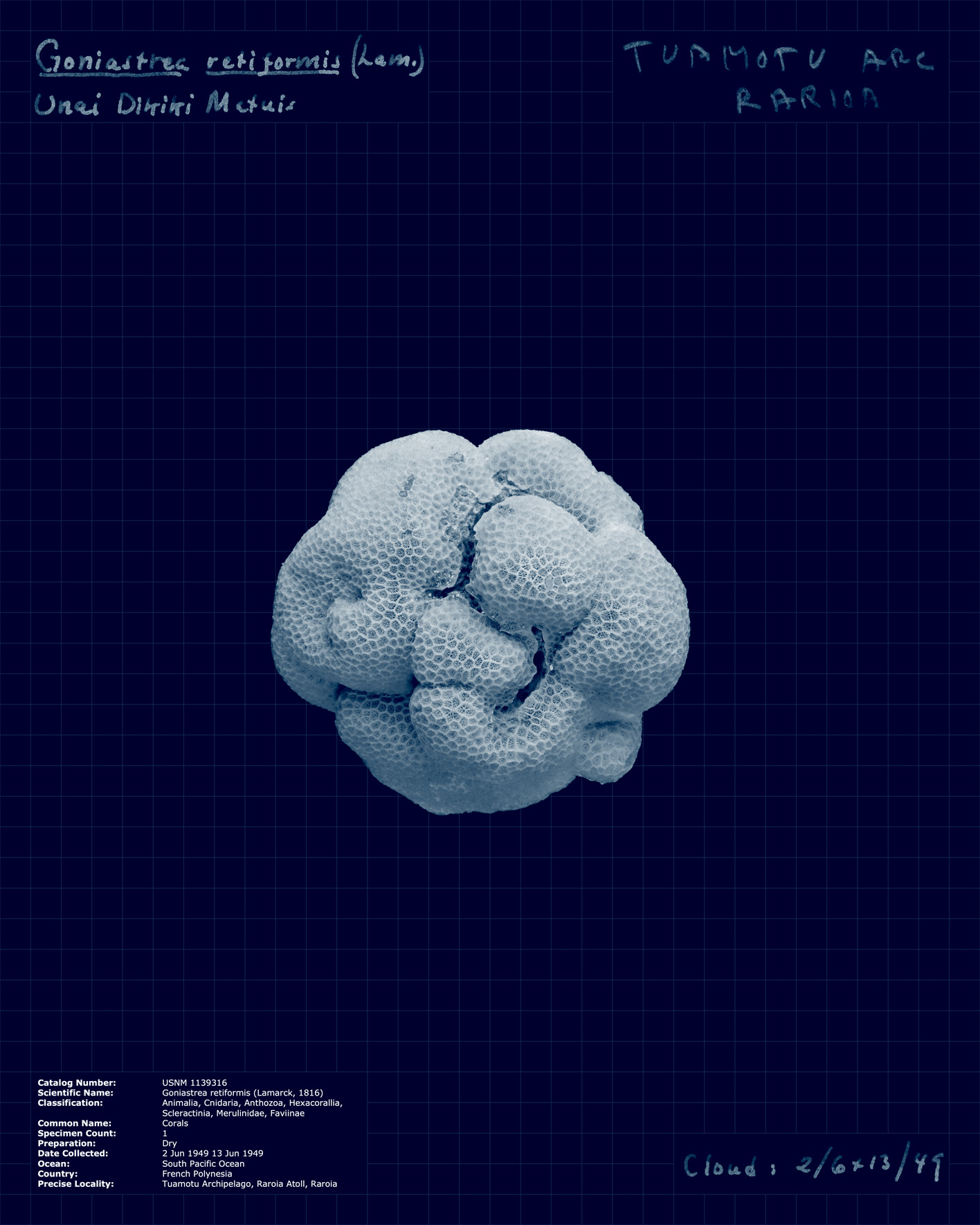

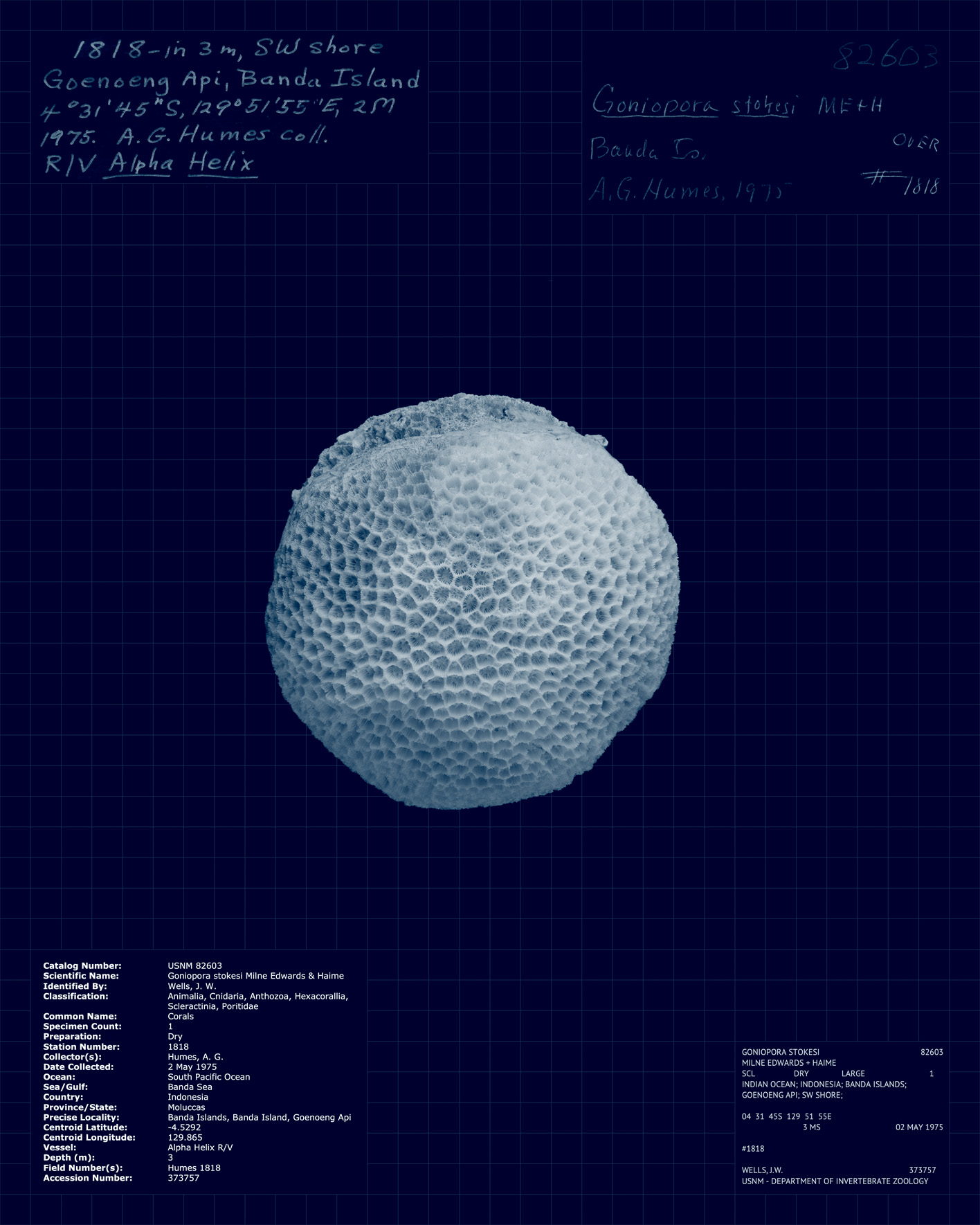
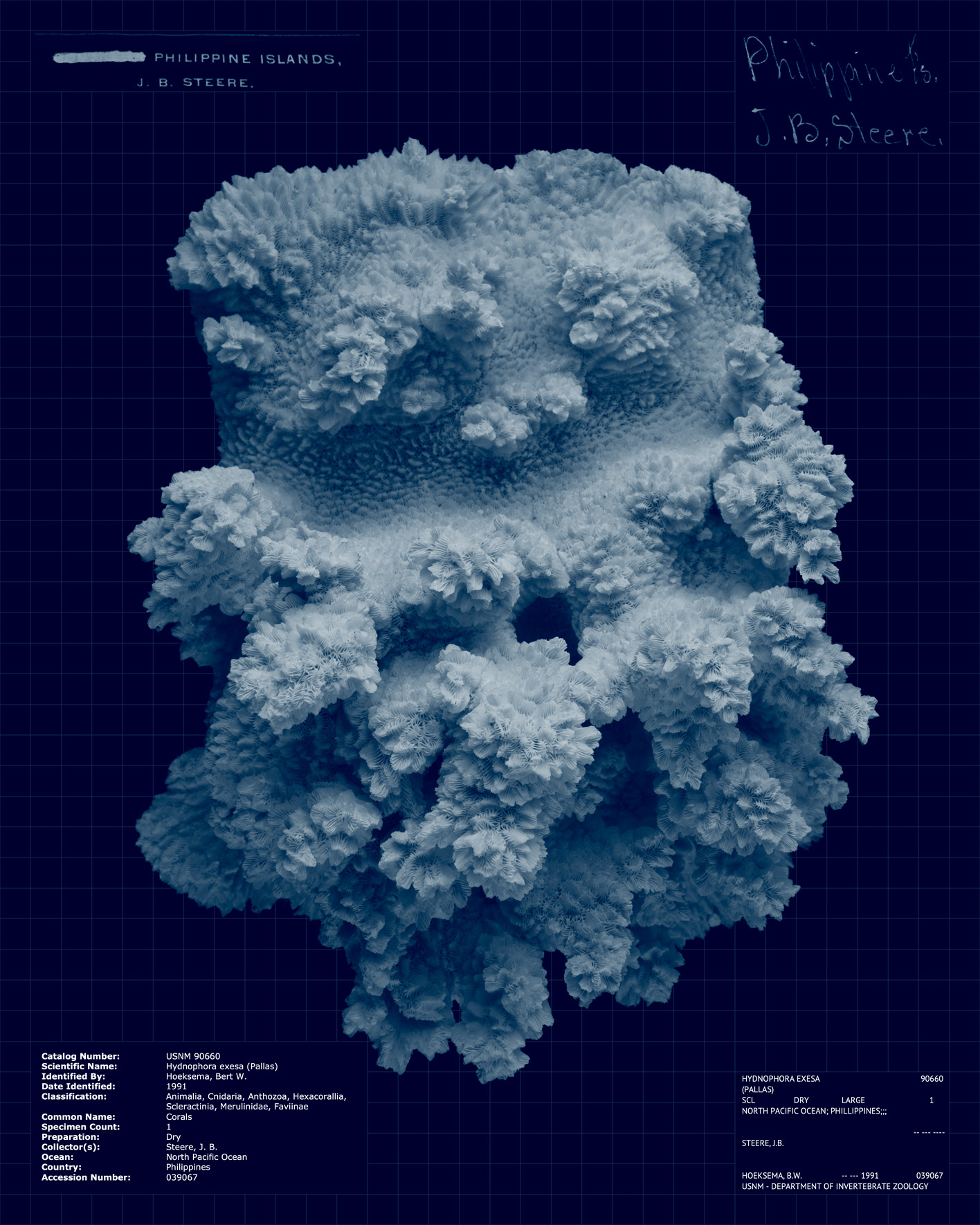
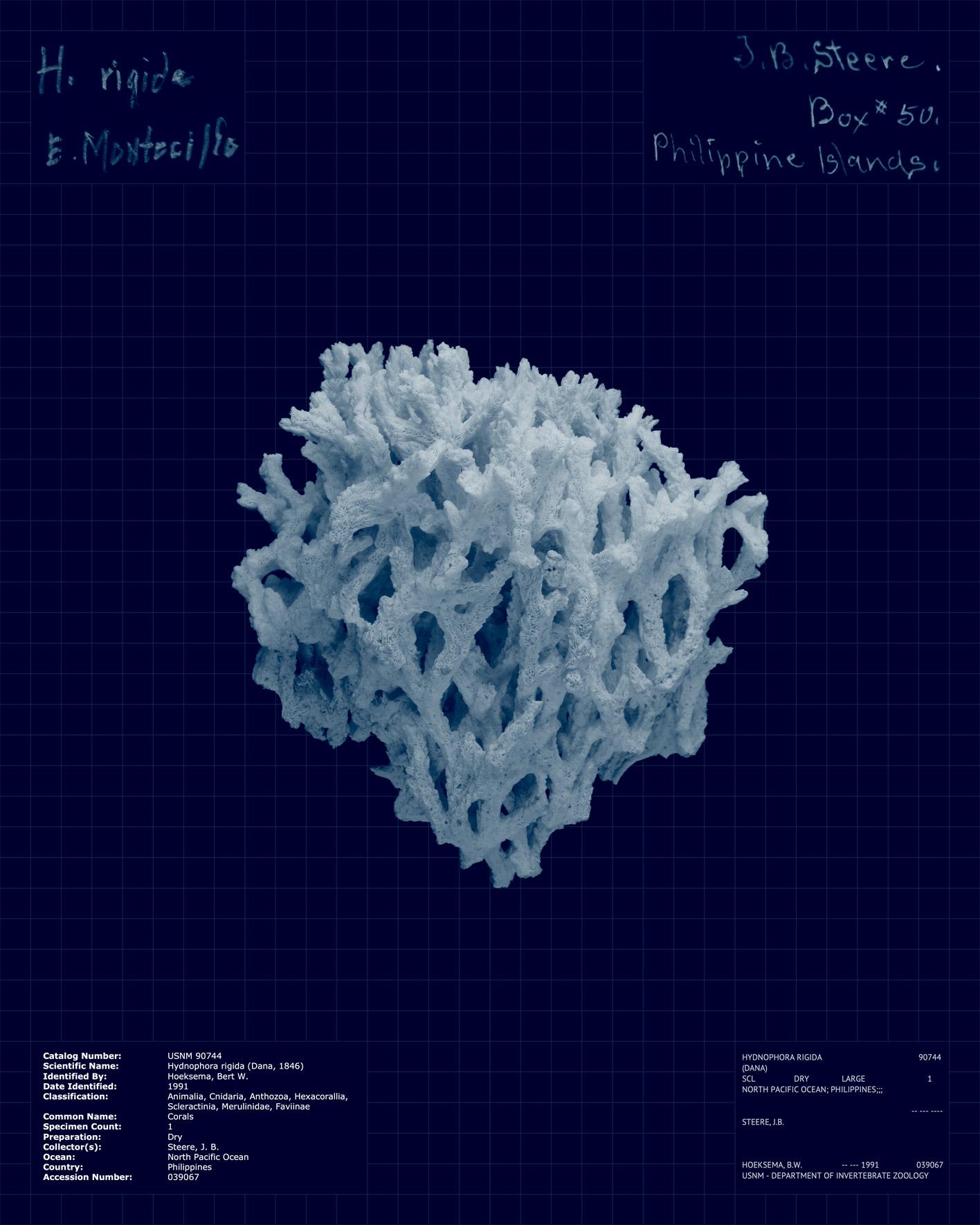
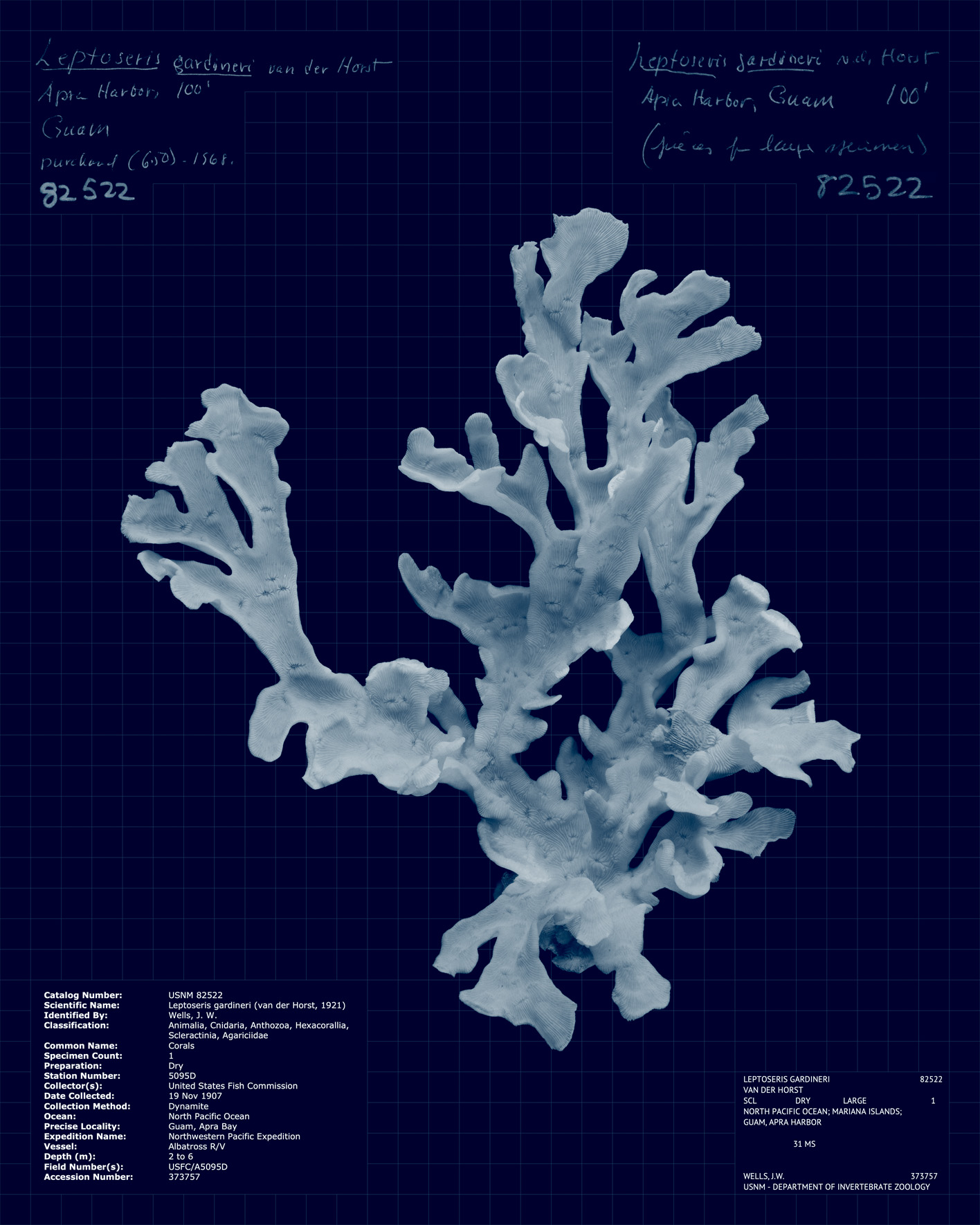
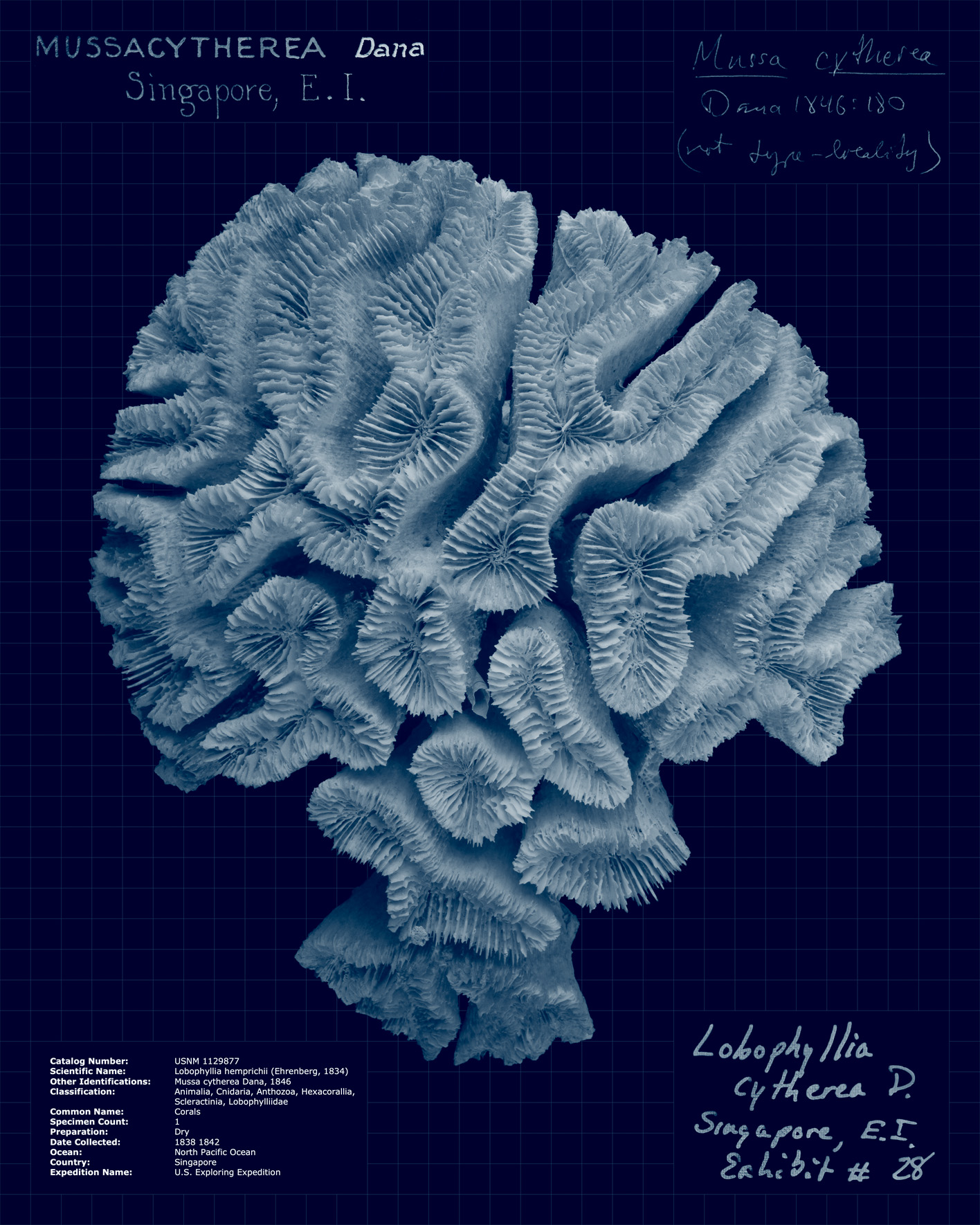
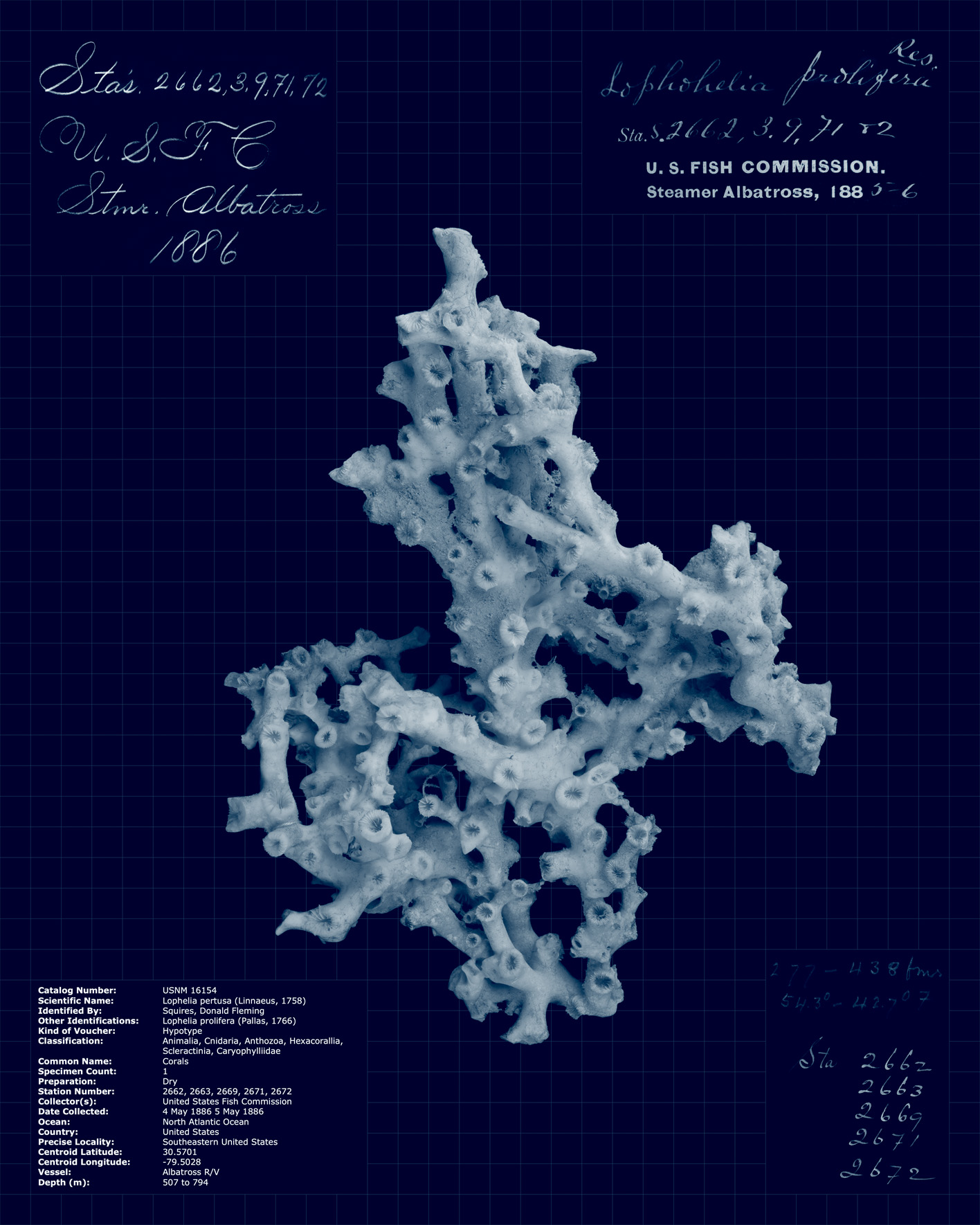
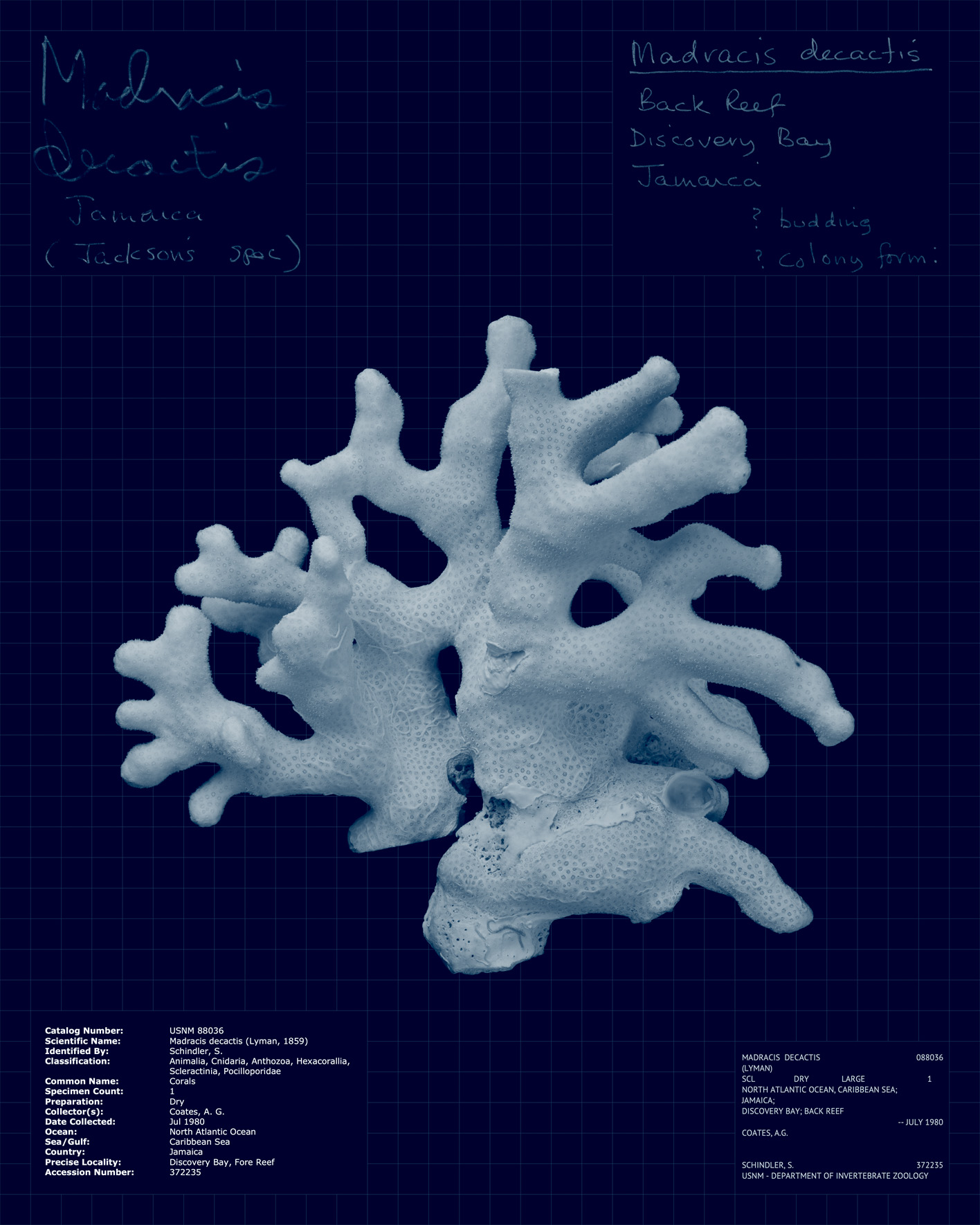
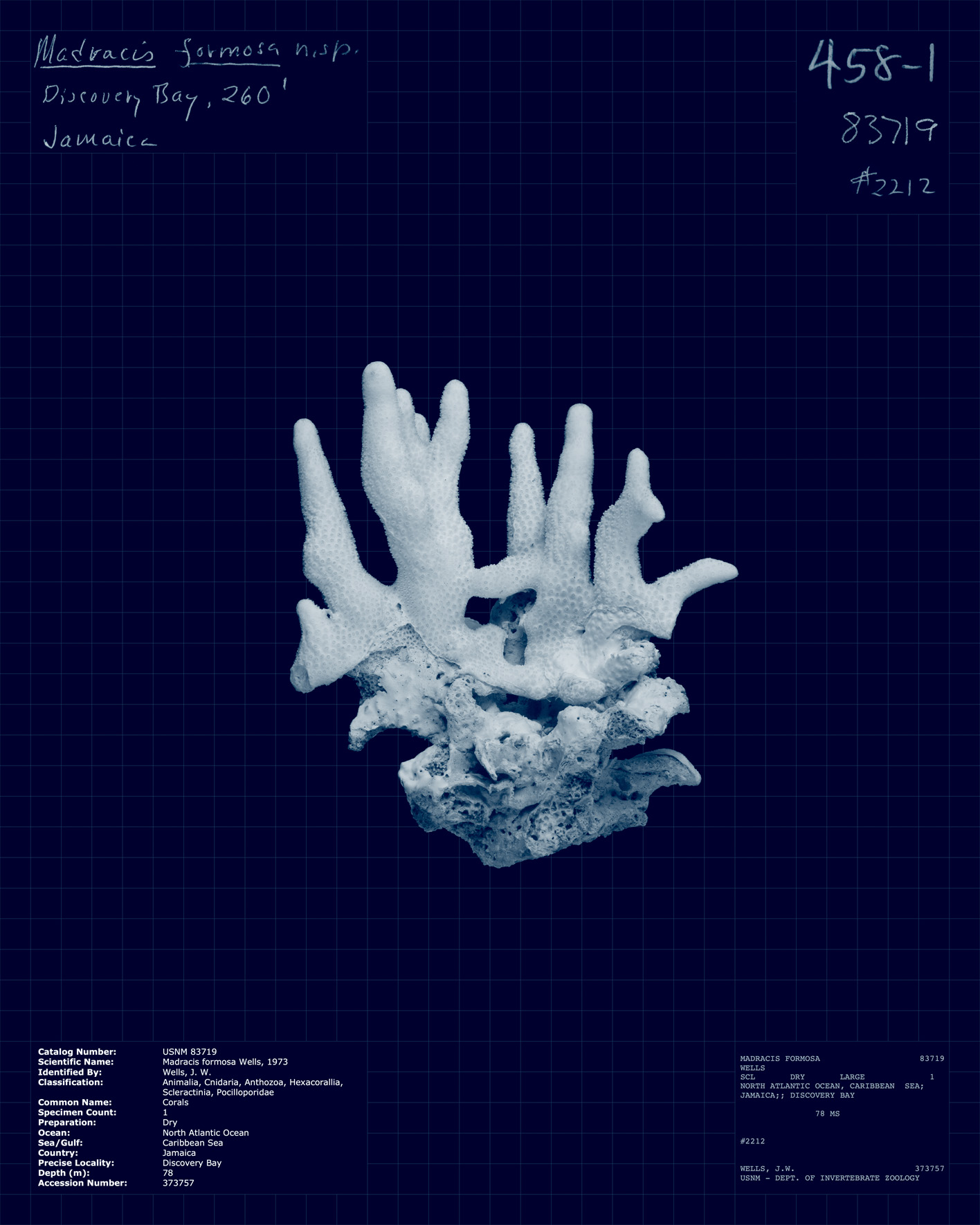
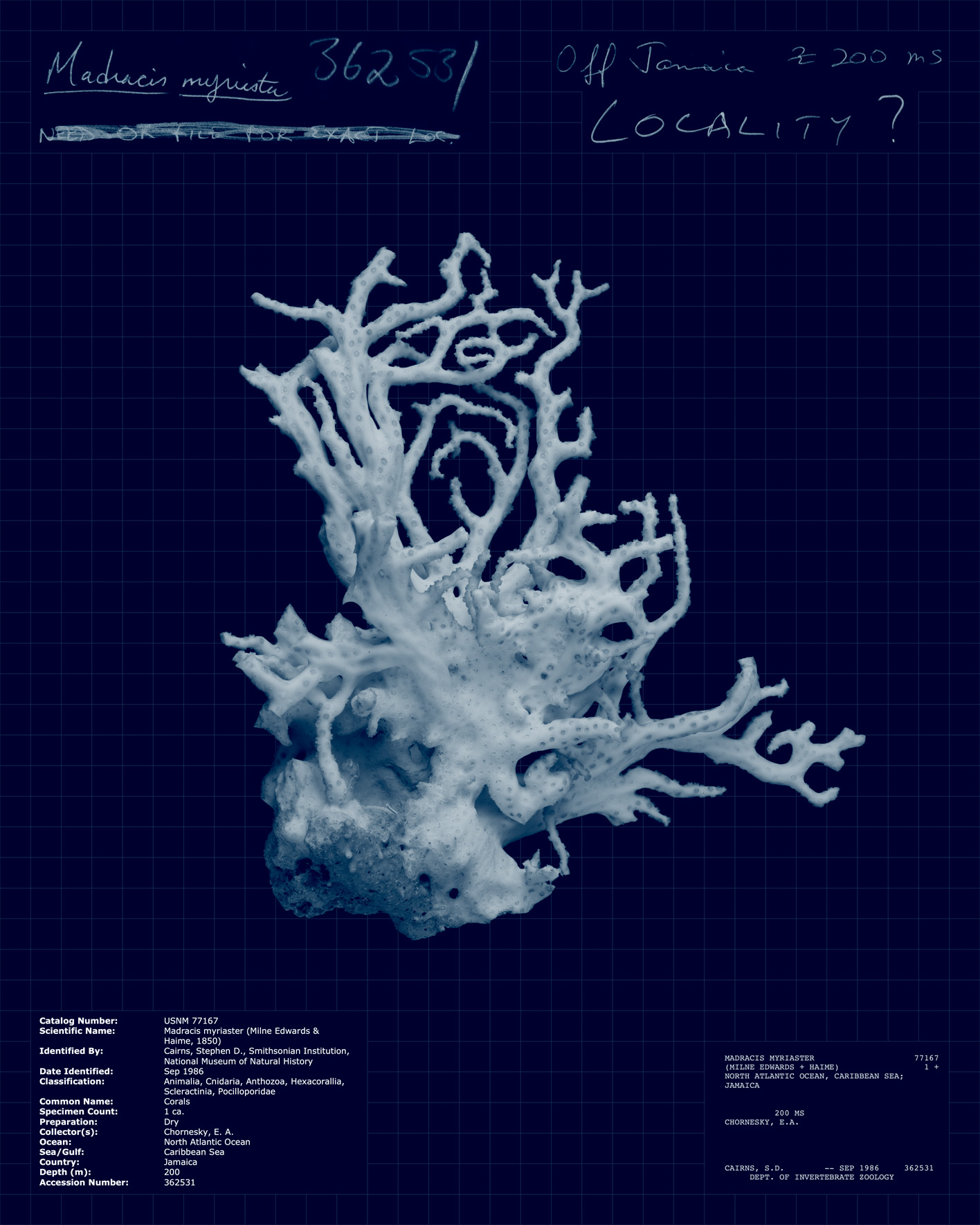
This series is an imagined historic collision between the Ex. Ex. and Anna Atkins. I was driven to do so because such stony corals are in great peril due to the rise in the temperature and acidity of the oceans, which is driven by climate change. Coral reef bleaching events, where the living coral is abandoned by its symbiotic algae, result in corals with tissues so transparent all that can be seen is their white skeletons. They have become more frequent and of greater magnitude in recent years, greatly increasing coral mortality. I hope that my cyanotypes are an aesthetic and conceptual reflection on this: the blue and white prints are reminiscent of a reef full of the white coral skeletons… Within our lifetimes, it’s possible that all that will be left of stony corals are their skeletons, crumbling in the oceans or on museum shelves.
Printing these images as cyanotypes also seems significant because it is a technique once used by architects to make blueprints. In many ways, stony corals are the “architecture of the oceans.” The reefs that they create are among the most biodiverse environments on the planet and are critical breeding and feeding grounds for many other marine creatures. Corals are the backbone of entire ocean ecosystems, even though they are invertebrates. If these reefs perish, many species will be without a home and the effects will resonate across the oceans. This will be felt by human societies around the globe. In economic terms, the value of reefs is immense.
It’s not too late for the coral, although we’re at a critical moment when action is required to save them, and there is plenty that can be done. Historically, the Ex. Ex. and Atkins represent two crucial moments for the democratization and dispersion of information… The Ex. Ex. was a grand and ambitious voyage of discovery, while Atkins was a persistent individual seeking knowledge. This seems fitting, as both ambitious global coordination as well as thoughtful personal choices are crucially needed if we are to save the world’s coral reefs and oceans.
My title for this series, Ex. Ex. Colonies, pays homage to the U.S. Exploring Expedition (although most of the coral I photographed were collected on later voyages). Colonies refers to most corals, which are colonial species, living together in groups. But my title is a word play as well. Ex. Ex. also refers to the removal of these species from the environment through human intervention (once by scientists collecting these specific corals and now at a global scale due to climate change). And colonies also references the problematic colonial history that is entwined with the history of museum collecting.

